
The Future of the Professions: How Technology Will Transform the Work of Human Experts
by
Richard Susskind
and
Daniel Susskind
Published 24 Aug 2015
<http://www.data.gov> for the USA, <http://data.gov.uk> for the UK, and <http://www.data.go.jp> for Japan. 14 Erik Brynjolfsson and Andrew McAfee, The Second Machine Age (2014), ch. 12. 15 Most notably, the Sarbanes–Oxley Act of 2002 (enacted 30 July 2002), known also as the ‘Public Company Accounting Reform and Investor Protection Act’. This is part of the federal law of the USA. 16 See e.g. Glasgow Herald, 18 Nov.1985, p. 15. 17 <http://www.ey.com> (accessed 23 March 2015). 18 Atul Gawande, The Checklist Manifesto (2010), 34. 19 Gawande, The Checklist Manifesto, 36. 20 See Yochai Benkler, The Wealth of Networks—How Social Production Transforms Markets and Freedom (2006). 21 <http://www.tripadvisor.co.uk>. 22 See Eric Topol, The Patient Will See You Now (2015), on driverless cars and doctorless patients. 23 Penelope Eckert, ‘Communities of Practice’, in The Encyclopedia of Language and Linguistics, ed.
…
One source of confusion with this term is that many ‘public goods’ also turn out to be good for the public—things like clean air, street-lighting, and national security, are public goods in the formal economic sense, and in the more general sense. 4 Yochai Benkler, The Wealth of Networks: How Social Production Transforms Markets and Freedom (2006), 37. 5 Kenneth Neil Cukier and Viktor Mayer-Schönberger, ‘The Rise of Big Data’, Foreign Affairs (May–June 2013) <http://www.foreignaffairs.com> (accessed 25 March 2015). 6 Hal Varian, ‘Markets for Information Goods’, University of California, Berkeley, 16 Oct. 1998 <http://people.ischool.berkeley.edu/~hal/Papers/japan/> (accessed 25 March 2015). 7 This is a heavily revised version of the model laid out in Richard Susskind, The End of Lawyers? (2008), ch. 2. 8 See previous reference in Ch. 2, n. 252. 9 Atul Gawande, The Checklist Manifesto (2010), 13. 10 Gawande, The Checklist Manifesto, 19. 11 See e.g. James Boyle, The Public Domain (2010). 12 Lawrence Lessig, The Future of Ideas (2001), 20. 13 Elinor Ostrom, Governing the Commons: The Evolution of Institutions for Collective Action (1990), 14. 14 Hal Varian, ‘Versioning: The Smart Way to Sell Information’, in Markets of One, ed.
…
A quotation from Antonio Weiss, ‘Harold Bloom, The Art of Criticism No. 1’, Paris Review, 118 (Spring, 1991) <http://www.theparisreview.org> (accessed 23 March 2015). 2 Eric Topol, The Patient Will See You Now (2015), 5. 3 ‘Policy: Improving quality of life for people with long term conditions’, Department of Health, 25 Mar. 2013 <https://www.gov.uk/government/policies/improving-quality-of-life-for-people-with-long-term-conditions> (accessed 6 March 2015). 4 Atul Gawande, The Checklist Manifesto (2010). 5 The OECD estimates that per capita visits to US doctors is 4 per annum (a 2010 figure). If US population is ~320 million (a 2014 figure), then average visits are 1.28bn per annum, and 107m per month (assuming the per capita visits have changed little). In contrast, the WebMD network has 190m unique users per month (and over 1bn pages views a month).
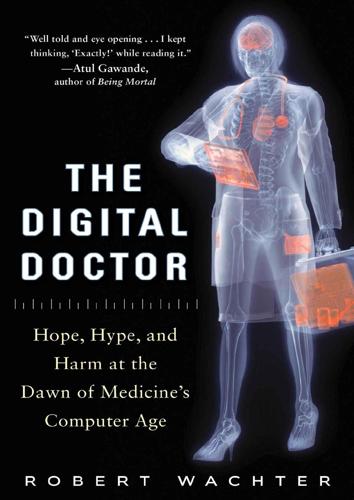
The Digital Doctor: Hope, Hype, and Harm at the Dawn of Medicine’s Computer Age
by
Robert Wachter
Published 7 Apr 2015
,” Politico Pro, September 3, 2014, available at http://www.politico.com/story/2014/09/can-big-data-and-patient-informed-consentcoexist-110567.html 120 Larry Fagan, the retired Stanford informatics expert Interview of Fagan by the author, August 7, 2014. 121 studies have shown that a patient’s identity B. Malin and L. Sweeney, “A Secure Protocol to Distribute Unlinkable Health Data,” JAMIA Proceedings 2005: 485–489 (2005). 121 “It collected 19 million data points on me” Interview of Vinod Khosla by the author, April 29, 2014. 121 In The Checklist Manifesto, the author and surgeon A. Gawande, The Checklist Manifesto: How to Get Things Right (New York: Metropolitan Books, 2009). 122 Gawande described the findings to me Interview of Atul Gawande by the author, July 28, 2014. 122 Mark Smith recalled his experience Interview of Smith by the author, July 24, 2014. Chapter 12: The Error 127 “It may seem a strange principle” F.
…
I kept thinking, ‘Exactly!’ while reading it, and that is a measure of Wachter’s accomplishment in telling the tale. This is the real story of what it’s like to practice medicine in the midst of a painful, historic, and often dangerous transition.” —Atul Gawande author of Being Mortal and The Checklist Manifesto “As scientific breakthroughs and information technology transform the practice of medicine, Bob Wachter is one of the few people with the insight, credibility, and investigative skills to go from the trenches to the observation booth. The Digital Doctor is first of all a personal journey, as Wachter travels the country, meets with key players who are shaping our future, and wrestles with their views.
…
But, he continued, “Once we have readings on 100 million people, it will become more valuable. It’s not the data. It’s the complex math that creates insights about that data.” And yet … and yet, as I reflect on the complexity of the problem, my instincts tell me that Khosla might not quite get it. In The Checklist Manifesto, the author and surgeon Atul Gawande recounted a study that vividly illustrates this complexity. In a single year, the trauma centers in the state of Pennsylvania saw 41,000 patients, who had 1,224 different injuries. Taken together, there were 32,261 unique combinations of injuries. Gawande described the findings to me in more detail: Someone stabbed in the eye, and stabbed in the belly.
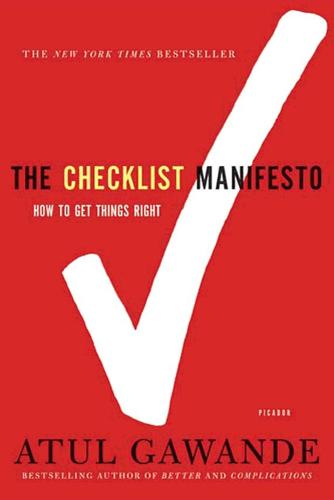
The Checklist Manifesto: How to Get Things Right
by
Atul Gawande
Published 2 Jan 2009
ALSO BY ATUL GAWANDE BETTER: A SURGEON’S NOTES ON PERFORMANCE COMPLICATIONS: A SURGEON’S NOTES ON AN IMPERFECT SCIENCE THE CHECKLIST MANIFESTO ATUL GAWANDE THE CHECKLIST MANIFESTO: HOW TO GET THINGS RIGHT METROPOLITAN BOOKS HENRY HOLT AND COMPANY NEW YORK Metropolitan Books Henry Holt and Company, LLC Publishers since 1866 175 Fifth Avenue New York, New York 10010 www.henryholt.com Metropolitan Books® and ® are registered trademarks of Henry Holt and Company, LLC. Copyright © 2009 by Atul Gawande All rights reserved. Distributed in Canada by H. B. Fenn and Company Ltd.
…
THE PROBLEM OF EXTREME COMPLEXITY 2. THE CHECKLIST 3. THE END OF THE MASTER BUILDER 4. THE IDEA 5. THE FIRST TRY 6. THE CHECKLIST FACTORY 7. THE TEST 8. THE HERO IN THE AGE OF CHECKLISTS 9. THE SAVE NOTES ON SOURCES ACKNOWLEDGMENTS THE CHECKLIST MANIFESTO INTRODUCTION I was chatting with a medical school friend of mine who is now a general surgeon in San Francisco. We were trading war stories, as surgeons are apt to do. One of John’s was about a guy who came in on Halloween night with a stab wound. He had been at a costume party. He got into an altercation.
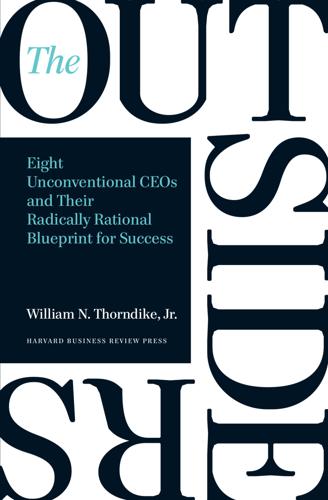
The Outsiders: Eight Unconventional CEOs and Their Radically Rational Blueprint for Success
by
William Thorndike
Published 14 Sep 2012
In today’s world of social media, instant messaging, and cacophonous cable shows, it’s increasingly hard to cut through the noise, to step back and engage Kahneman’s system 2, which is where a tool that’s been much in the news lately can come in handy. The Outsider’s Checklist Checklists have proved to be extremely effective decision-making tools in fields as diverse as aviation, medicine, and construction. Their apparent simplicity belies their power, and thanks to Atul Gawande’s excellent recent book, The Checklist Manifesto, their use is a hot topic these days.1 Checklists are a particularly effective form of “choice architecture,” working to promote analysis and rationality and eliminate the distractions that often cloud complex decisions. They are a systematic way to engage system 2, and for CEOs, they can be highly effective vaccines, inoculating against conventional wisdom and the institutional imperative.
…
Munger, September 10, 2004. 4. Author interview with Pat Mulcahy, April 23, 2009. 5. Andrew Barry, “What a Gusher,” Barron’s, November 16, 2009. 6. Michiyo Nakamoto and David Wighton, “Citigroup Chief Stays Bullish on Buy-outs,” Financial Times, July 9, 2007. Epilogue 1. Atul Gawande, The Checklist Manifesto: How to Get Things Right (New York: Metropolitan Books, 2010). Further Reading Auletta, Ken. The Highwaymen: Warriors of the Information Super Highway. New York: Harcourt, Brace and Company, 1997. Auletta, Ken. Three Blind Mice: How the TV Networks Lost Their Way. New York: Random House, 1991.
…
See stock repurchase programs cable television industry, 10, 19, 26, 29, 32, 33, 83–107, 115–117, 120–121, 125, 203, 205, 207, 212–213 Cadbury Schweppes, 154 Campbell Soup, 129 Canada Dry, 153 capital allocation, xiii —Anders and successors and, 68–69, 76, 77, 79–80 —Buffett on importance of, xiii —Buffett’s use of, 57, 181–183, 211–212, 225, 226t —Malone and, 88, 95, 102–104, 107, 212 —Murphy and, 16, 27–30 —outsider CEOs and independence in, 202 —Singleton and, xii, xiv, 38, 42, 55, 57, 207 —Smith and, 161, 162–163, 164, 165–166 —Stiritz and, 137–138 —Tillerson and, 203 —Transdigm and, 35 Capital Cities Broadcasting (CCB), 13–34 —acquisitions by, 15–16, 17–19, 21, 27, 28–30, 31, 174, 203 —Buffett and, 13, 19, 21, 31–32, 189 —Burke’s partnership in, 18, 19–20, 21 —capital allocation in, 16, 27–30 —cash flow at, 18, 20, 21, 27, 30, 31 —CBS compared with, 13–15 —decentralized approach of, 17, 20, 23–24, 28 —frugality in, 24–25 —Graham’s purchase of, 115–116, 117, 120 —hiring practices and employee autonomy at, 26–27 —reputation of, 34 —stock performance under Murphy at, 21, 22f, 31–33 —stock repurchase programs of, 19, 21, 27–28, 30–31 Carter Hawley Hale (CHH), 150, 155–156, 163, 165 Cartoon Network, 94 cash flow —Anders and successors and, 65–66, 68, 77, 79 —Buffett and, 172, 174, 178, 181 —Malone and, 10, 88, 89, 90–91, 92, 96, 100, 101 —Murphy and, 18, 20, 21, 27, 30, 31 —outsider CEOs’ focus on, 6, 9–10, 207, 208t —Paley and, 14 —Ralston Purina and, 130, 134, 139 —Singleton and, 11, 44–45 —Smith and, 150, 152, 157, 162–163, 165–166 —Transdigm and, 34, 35 CBS, 13–14, 15, 20, 130, 161 CEOs. See also outsider CEOs —media portrayal of, 2, 6 Chabraja, Nick, 64, 70, 71–74, 75, 76, 77–80 Chace, Ken, 172 Chace family, 167, 168 Champion Industries, 175 Checklist Manifesto, The (Gawande), 218 Chronicle Publishing, 32–33 Churchill, Winston, 167, 192 Cisco, 205 Clouston, Brendan, 96 CNN, 94 Coca-Cola Company, 175, 187 Coke brand franchise, 153, 156–157 Collins, Jim, 202–203 Columbia Business School, xiv, 169 Columbia Pictures, 154 Comcast, 33, 91, 161 compensation for executives, 76–77, 162 Constellation Energy, 211 Continental Baking brand, 133–134, 139, 140, 142, 143 Cooperman, Leon, 56 corporate office buildings, xvii, 2, 14, 20, 88, 127, 161 cost control —Malone and, 89–90, 96 —Murphy and, 24–25 —Paley and, 14 —Smith and, 153, 164 Cowles Media, 120 Cravath Swaine, 120, 123 Crawford, Gordon, 19, 32–33 Curtiss-Wright, 49 Davos meetings, xvii Dean, Hal, 130 debt —Buffett’s use of, 178 —Graham’s use of, 117 —Malone’s use of, 89, 92, 100, 102 —Murphy’s use of, 15, 27 —Singleton’s use of, xiv, 55, 56 —Smith’s use of, 156, 162, 163, 164, 165 —Stiritz’s use of, xiv, 139, 140f decentralized organizations —Anders and successors and, 76 —Buffett and, 57, 190–191 —Malone and, 106–107 —Murphy and, 17, 20, 23–24, 28 —outsider CEOs’ focus on, 6, 207, 208t —Singleton and, 43–44, 57 —Stiritz and, 135, 140–141 —Transdigm and, 35 defense industry, 59–81 Dell, 205 Del Rossi, Paul, 162 Denning, Dick, 163 Deresiewicz, William, 197 DIRECTV, 212 Discovery channel, 94 Disney, 14, 21, 28, 32, 33, 171 diversification —Anders and, 60, 73 —Graham and, 116, 119, 120, 127 —Murphy and, 15, 27 —packaged goods companies and, 129–130 —Paley and, 14 —Ralston Purina and, 130 —Singleton and, 40–41, 151 —Smith and, 150–151, 152, 154–155, 157 —Stiritz and, 129–130, 131 divestitures.
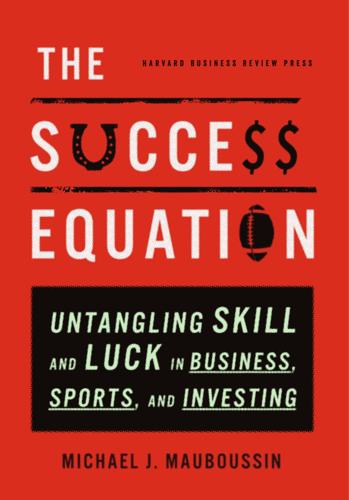
The Success Equation: Untangling Skill and Luck in Business, Sports, and Investing
by
Michael J. Mauboussin
Published 14 Jul 2012
At first, the doctors saw it as an effort to undermine their authority, while the nurses worried that it would open them up to criticism. But Pronovost convinced all parties to try the new approach. Within a year, the rate of infection dropped nearly to zero.21 Pronovost's work on checklists was noticed by Atul Gawande, eventually prompting him to write a book called The Checklist Manifesto. In the book, Gawande looks at the use of checklists in various fields and provides some guidelines on how to write ones that are effective. Specifically, it is essential to involve the people who are doing the work.22 For example, Pronovost started with the Centers for Disease Control's long and academic discussion of procedures but soon realized that thoughtful practitioners would have to play a central part in creating the actual checklist.
…
Atul Gawande, “The Checklist: If Something So Simple Can Transform Intensive Care, What Else Can It Do?” The New Yorker, December 10, 2007. 21. Peter Pronovost, MD PhD, and Eric Vohr, Safe Patients, Smart Hospitals: How One Doctor's Checklist Can Help Us Change Health Care from the Inside Out (New York: Hudson Street Books, 2010). 22. Atul Gawande, The Checklist Manifesto: How to Get Things Right (New York: Metropolitan Books, 2009), 114–135. 23. Daniel Boorman, “Safety Benefits of Electronic Checklists: An Analysis of Commercial Transport Accidents,” Proceedings of the 11th International Symposium on Aviation Psychology, 2001, 5–8. 24. For additional reading on how to create a checklist, see Brigette Hales, Marius Terblanche, Robert Fowler, and William Sibbald, “Development of Medical Checklists for Improved Quality of Patient Care,” International Journal for Quality in Health Care 20, no. 1 (February 2008): 22–30; and Michael Shearn, The Investment Checklist: The Art of In-Depth Research (Hoboken, NJ: John Wiley & Sons, 2012). 25.
…
For additional reading on how to create a checklist, see Brigette Hales, Marius Terblanche, Robert Fowler, and William Sibbald, “Development of Medical Checklists for Improved Quality of Patient Care,” International Journal for Quality in Health Care 20, no. 1 (February 2008): 22–30; and Michael Shearn, The Investment Checklist: The Art of In-Depth Research (Hoboken, NJ: John Wiley & Sons, 2012). 25. Gawande, The Checklist Manifesto, 114–135. 26. Pronovost and Vohr, Safe Patients, Smart Hospitals, 175. 27. Steven Crist, “Crist on Value,” in Beyer et al., Bet with the Best (New York: Daily Racing Form Press, 2001), 64. 28. Benjamin Graham, The Intelligent Investor: A Book of Practical Counsel, 4th rev. ed. (New York: Harper & Row, 1973), 281. 29.
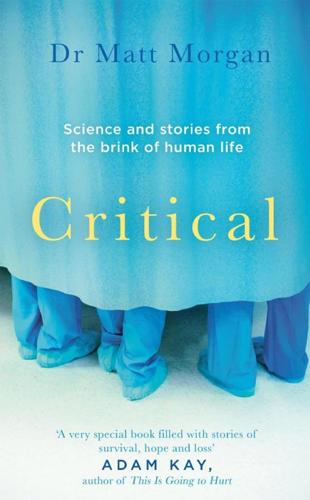
Critical: Science and Stories From the Brink of Human Life
by
Matt Morgan
Published 29 May 2019
‘The cream contained aspirin as the active ingredient, the willow-bark extract originally used by ancient Egyptians as a remedy for aches and pains.’ Vainio, H. & Morgan, G. Aspirin for the second hundred years: new uses for an old drug. Pharmacol. Toxicol. 81, 151–152 (1997). ‘Atul Gawande’s paradigm-shifting book, The Checklist Manifesto.’ Gawande, A. (2010). The Checklist Manifesto: How To Get Things Right. New York: Metropolitan Books. ‘His introduction of the World Health Organization’s “Surgical Safety Checklist” has saved millions of lives . . .’ Haynes, A. B. et al. A surgical safety checklist to reduce morbidity and mortality in a global population.
…
Intensive care nurtures a robust system that should be able to fail gracefully not catastrophically. It should compensate, have resilience and redundancy, in anticipation of human error. However, it is in no way perfect and has a long way to go. These improvements have been achieved through three strands of innovation. Atul Gawande’s paradigm-shifting book, The Checklist Manifesto, introduced to medicine simple yet effective techniques you already use when shopping to remember those essential items. His introduction of the World Health Organization’s ‘Surgical Safety Checklist’ has saved millions of lives by ensuring that simple critical steps, such as checking a patient’s name and allergies, are carried out for each and every operation.
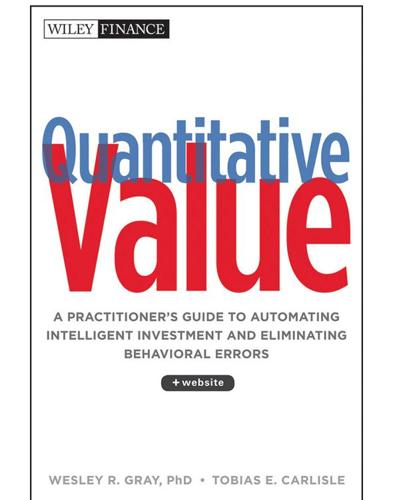
Quantitative Value: A Practitioner's Guide to Automating Intelligent Investment and Eliminating Behavioral Errors
by
Wesley R. Gray
and
Tobias E. Carlisle
Published 29 Nov 2012
The successes have been sustained for almost four years—all, writes Gawande, because of “a stupid little checklist.” The implications are clear: intensivists need checklists to walk them step-by-step through the complex ICU processes. Gawande eventually turned his article into the best-selling book, The Checklist Manifesto: How to Get Things Right,16. which argues for a broader implementation of checklists. Gawande believes that in many fields, the problem is not a lack of knowledge but in making sure we apply the knowledge we do have consistently and correctly. He includes examples of successes in fields as diverse as weather prediction, skyscraper construction, and, yes, even investment.
…
Perspectives, Morningstar, January 16, 2012; http://news.morningstar.com/articlenet/SubmissionsArticle.aspx?submissionid=134195.xml&part=2. 15. Atul Gawande, “The Checklist.” The New Yorker, Annals of Medicine (December 10, 2007); www.newyorker.com/reporting/2007/12/10/071210fa_fact_gawande?currentPage=2. 16. Atul Gawande, The Checklist Manifesto: How to Get Things Right (New York: Metropolitan Books, 2009). PART TWO Margin of Safety—How to Avoid a Permanent Loss of Capital In Part Two, we describe the first step in our checklist: how to avoid stocks at risk of a permanent loss of capital. The potential for a total loss manifests in three ways: financial statement manipulation, fraud, and financial distress and bankruptcy.
…
Availability bias Ayres, Ian Bachelier, Louis Bailey, Morris Bankruptcy prediction history of improving Batchelor, Roy Beat the Dealer (Thorp) Beat the Market: A Scientific Stock Market System (Thorp & Kassouf) Behavioral errors, quantitative investing's protection against cognitive biases experts' errors value investors'errors Behavioral Investing: A Practitioners Guide to Applying Behavioral Finance (Montier) Benchmarking Beneish, Messod Berk, Jonathan Bogue, Marcus Bonaime, Alice Book value-to-market capitalization ratio Brooks, Chris Buffett, Warren See's Candies acquisition Buybacks Campbell, John Cash flow on assets (CFOA) CGM Focus Fund Chava, Sudheer “The Checklist” (Gawande) The Checklist Manifesto: How to Get Things Right (Gawande) Chuvakhin, Nikolai Cloning Cognitive biases adjustment bias anchoring availability bias hindsight bias neglect of the base case overconfidence self-attribution bias Confirmation bias “Contrarian Investment, Extrapolation, and Risk” (Lakonishok, Schleifer, & Vishny) Cowles, Alfred, III “The Cross-Section of Expected Stock Returns” (Fama & French) Data mining “Decoding Inside Information” (Cohen, Malloy, & Pomorski) “Delisting Returns and Their Effect on Accounting-Based Market Anomalies” (Price, Beaver, & McNichols) Dumb money, paradox of behavioral errors, quantitative investing's protection against cognitive biases experts' errors value investors'errors quantitative value investing, power of value strategies Graham's quantitative Earnings manipulators and frauds, eliminating accruals detecting earnings manipulation PROBMs, predicting Enron Earnings yield Efficient market theory Einhorn, David Enron Enterprise yield (EBITDA and EBIT variations) Expert Political Judgment (Tetlock) Fama, Eugene Financial distress, measuring risk of bankruptcy prediction history of improving calculating universe, scrubbing Financial strength case study: Lubrizol Corporation comparing performance of F_SCORE and FS_SCORE financial strength score (FS_SCORE) current profitability formula and interpretation recent operational improvements stability Piotroski Fundamental Score (F_SCORE) analyzing formula and interpretation Fooled by Randomness (Taleb) Forward earnings estimate Franchises finding economic moats and excess returns persistence pricing power and big, stable margins See's Candies, acquisition by Buffett Fraud.
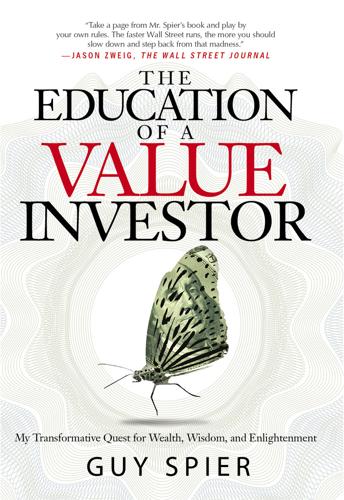
The Education of a Value Investor: My Transformative Quest for Wealth, Wisdom, and Enlightenment
by
Guy Spier
Published 8 Sep 2014
The students then read through the investors’ public statements and annual letters to reconstruct the thinking behind these failed investments. Gawande himself became intrigued by what we were doing. He interviewed Mohnish and me, and he wrote a few pages about us in his 2009 bestseller The Checklist Manifesto: How to Get Things Right. Among other things, he mentioned Mohnish’s realization that he had “repeatedly erred” in underestimating the riskiness of leveraged companies. As I suggested to Gawande, part of the problem might lie in what I described as “cocaine brain”: the intoxicating prospect of making money can arouse the same reward circuits in the brain that are stimulated by drugs, making the rational mind ignore supposedly extraneous details that are actually very relevant.
…
Or, A Good Hard Look at Wall Street by Fred Schwed Your Money and Your Brain: How the New Science of Neuroeconomics Can Help Make You Rich by Jason Zweig Literature 100 Years of Solitude by Gabriel García Márquez Hamlet by William Shakespeare Jonathan Livingston Seagull by Richard Bach Oliver Twist by Charles Dickens Zen and the Art of Motorcycle Maintenance: An Inquiry into Values by Robert Pirsig Miscellaneous Autobiography: The Story of My Experiments with the Truth by Mahatma Gandhi City Police by Jonathan Rubinstein Endurance: Shackleton’s Incredible Voyage by Alfred Lansing Long Walk to Freedom: The Autobiography of Nelson Mandela by Nelson Mandela Metaphors We Live By by George Lakoff and Mark Johnson Reagan: A Life in Letters by Ronald Reagan The Autobiography of Benjamin Franklin by Benjamin Franklin The Checklist Manifesto: How to Get Things Right by Atul Gawande The Hero with a Thousand Faces by Joseph Campbell The New British Constitution by Vernon Bogdanor The Power of Myth by Joseph Campbell with Bill Moyers Vor 1914: Erinnerungen an Frankfurt geschrieben in Israel by Selmar Spier Walden: or, Life in the Woods by Henry David Thoreau Why America Is Not a New Rome by Vaclav Smil Philosophy and Theology A Theory of Justice by John Rawls Anarchy, the State, and Utopia by Robert Nozick Destination Torah: Reflections on the Weekly Torah Readings by Isaac Sassoon Halakhic Man by Joseph Soloveitchik Letters from a Stoic by Lucius Annaeus Seneca Man’s Search for Meaning by Viktor Frankl Meditations by Marcus Aurelius Pirke Avot: A Modern Commentary on Jewish Ethics by Leonard Kravits and Kerry Olitzky Plato, not Prozac!
…
., 13 Burry, Michael, 90 buying and selling, rule for timing of, 145–6 BYD Auto, 125–6 Byrd, Aaron, 63 Cameron, David, 25, 76 Campbell, Joseph, 25 Capotorto, Vito, 15 CarMax, 97, 165–6 checking stock prices, rule for, 135–7 “Checklist, The” (Gawande), 152–3 Checklist Manifesto: How to Get Things Right, The (Gawande), 154 chess, 18, 36, 128–30 Christakis, Nicholas, 172, 177 Churchill, Winston, 115 Cialdini, Robert, 1, 60–1, 148, 162 Coca-Cola, 40, 78, 137, 178 commuting to work, 113 complexity of economic world, 104–5, 151–2 CORT Furniture, 153 Costco, 164–5 Cresud, 97–8, 149 Cunniff, Carley, 37–8.
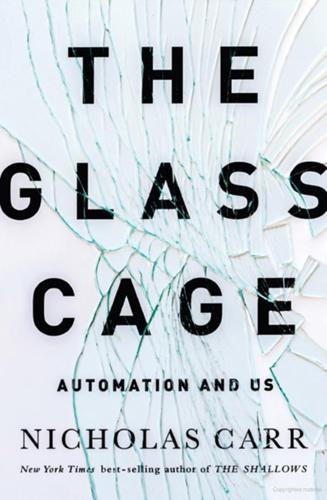
The Glass Cage: Automation and Us
by
Nicholas Carr
Published 28 Sep 2014
The key is to strike the right balance between grasping the specifics of the patient’s situation and inferring general patterns and probabilities derived from reading and experience. Checklists and other decision guides can serve as valuable aids in this process. They bring order to complicated and sometimes chaotic circumstances. But as the surgeon and New Yorker writer Atul Gawande explained in his book The Checklist Manifesto, the “virtues of regimentation” don’t negate the need for “courage, wits, and improvisation.” The best clinicians will always be distinguished by their “expert audacity.”24 By requiring a doctor to follow templates and prompts too slavishly, computer automation can skew the dynamics of doctor-patient relations.
…
Greenberg, “Too Many Alerts, Too Much Liability: Sorting through the Malpractice Implications of Drug-Drug Interaction Clinical Decision Support,” Saint Louis University Journal of Health Law and Policy 5 (2012): 257–295; and David W. Bates, “Clinical Decision Support and the Law: The Big Picture,” Saint Louis University Journal of Health Law and Policy 5 (2012): 319–324. 24.Atul Gawande, The Checklist Manifesto: How to Get Things Right (New York: Henry Holt, 2010), 161–162. 25.Lown and Rodriguez, “Lost in Translation?” 26.Jerome Groopman, How Doctors Think (New York: Houghton Mifflin, 2007), 34–35. 27.Adam Smith, The Wealth of Nations (New York: Modern Library, 2000), 840. 28.Ibid., 4. 29.Frederick Winslow Taylor, The Principles of Scientific Management (New York: Harper & Brothers, 1913), 11. 30.Ibid., 36. 31.Hannah Arendt, The Human Condition (Chicago: University of Chicago Press, 1998), 147. 32.Harry Braverman, Labor and Monopoly Capital: The Degradation of Work in the Twentieth Century (New York: Monthly Review Press, 1998), 307. 33.For a succinct review of the Braverman debate, see Peter Meiksins, “Labor and Monopoly Capital for the 1990s: A Review and Critique of the Labor Process Debate,” Monthly Review, November 1994. 34.James R.
…
., 122 cancer, 70–71 capital investments, 18, 28, 30, 31 capitalism, 21–22, 24, 28, 31, 109, 116, 160 Carlsen, Magnus, 82 cars and driving, 3–18, 34, 46 accidents, 7, 70, 91, 153, 154–55, 207, 208 author’s experience with, 3–6, 13–14, 80, 81 automation bias and, 69–70 GPS in, 128, 130, 136–37 luxury, 8 manual vs. automatic transmission in, 3–6 paper maps and, 130 self-driving, 6–8, 10, 12, 13, 120, 153–56, 183–87, 193, 204, 207, 208 while sleepy, 71–72 Cartesian dualism, 148–49 Cartlidge, John, 77 cartoons, 19, 33 Caruthers, Felix P., 174 cascading failures, 155 Centers for Disease Control, 220 Cerner Corporation, 96 Chabris, Christopher, 201 Chapanis, Alphonse, 158 Checklist Manifesto, The (Gawande), 104 Cheng, Britte Haugan, 73 chess playing, 12, 121 China, 31, 167 Churchill, Winston, 139 CIA, 120 Cisco, 195 City University London, 70 Clark, Andy, 149–51 Clarke, Arthur C., 197–98 cloud computing, 195, 202, 209 cognition, cognitive skills, 11–12, 56–58, 71–74, 81, 120, 121, 148–51, 165 of doctors, 105 embodied, 149–51, 213 cognitive map, 129–30, 135 cognitive psychologists, 72–76, 81, 129–30 Colgan Air, 45 communication, 36, 163, 198 doctor-patient, 103–6 Communist Manifesto (Marx and Engels), 225 computer-aided design (CAD), 138–42, 144, 145, 167, 219, 229–30 computer games, 75, 177–80, 219 computer programmers, 161, 162, 168 computers, 1, 2, 17, 33, 37, 38, 40, 159 architecture and design and, 138–47 automation and, 36, 43, 50–58, 62, 66–67, 69, 90, 91, 202–3 aviation and, 43, 46, 50–52, 54, 55, 57, 62, 153, 168, 170, 172–73 avocations and, 12 benefits of transferring work to, 17–18 boundary between humans and, 10–12 brain compared with, 119, 151 capabilities of, 8–9 in cars, 7, 8–9 costs of transferring work to, 18, 28, 30, 66–67 dependency on, 12–13 effects on workload of, 90, 91 ergonomics and, 164–68 expectation of aid of, 193–95 health care and, 93–106 human compared with, 153 as media devices, 219 memory experiment and, 79 mental processes and, 74 monitoring of, 17 oracle machine, 119–20 satellite-linked, 125–37 speed of, 118–22, 139, 156, 164, 173, 219 vocations and, 12 wearable, 12, 201 white-collar, 93–106 computer scientists, 156 computer simulation models, 93, 97 concentration, 200 Concours de la Sécurité en Aéroplane, 46 consciousness, 83, 119n, 121, 148–49, 150, 187 Continental Connection, 43–45, 54, 154 corporate auditors, 115 Cowen, Tyler, 31 craft workers, 23, 106, 109 Crawford, Kate, 122–23 Crawford, Matthew, 147–48 creativity, 10, 12, 14, 143, 144, 167, 206, 229 Cross, Nigel, 143–44 Csikszentmihalyi, Mihalyi, 14–16, 18, 85, 228–29 Cukier, Kenneth, 122 culture, 124, 131, 196, 198, 217, 220, 226 Curtiss C-2 biplane, 46–47 cutting grass, 215–16 Cybernetics, or Control and Communication in the Animal and the Machine (Wiener), 38–39 cyborgs, 2 dancing mice, 87–92 Dancing Mouse, The (Yerkes), 85–86 DARPA (Department of Defense laboratory), 165 Dassault, 140 data, 113, 114, 117, 119–22, 136, 167, 248n data fundamentalism, 122–23 data processing, 17, 195 decision aids, automated, 113–15, 166 drawbacks to, 77 decision making, 160, 166, 168 decision trees, 113–14 declarative knowledge, 9, 10–11, 83 Deep Blue, 12 degeneration effect, 65–85 automation complacency and bias and, 67–72 Whitehead’s views and, 65–67 dementia, 135–37 dependency, 130, 133, 136, 146, 203, 225 depression, 220 Descartes, René, 148, 216 design, designers, 137–47 computer-aided (CAD), 138–42, 144, 145, 167, 219, 229–30 human- vs. technology-centered automation and, 158–62, 164–65, 167–70, 172 parametric, 140–41 system, 155–57 video games as model for, 178–82 Designerly Ways of Knowing (Cross), 143–44 desire, 15, 17, 20, 83, 161, 206–7, 210 to understand the world, 123–24 deskilling, 55, 100, 106–12, 115 Dewey, John, 148, 149, 220 diabetes, 245n–46n diagnostic testing, 70–71, 99, 102 DiFazio, William, 27–28 Digital Apollo (Mindell), 60, 61 disease, 70–71, 113, 135–37, 245n–46n dislocation, 133 Do, Ellen Yi-Luen, 167 Doctor Algorithm, 154, 155 doctors, 12, 32, 70, 93–106, 114–15, 120, 123, 147, 155, 166, 173, 219 evidence-based medicine (EBM) and, 114, 123 patient’s relationship with, 103–6 primary-care, 100–104, 154 document discovery, 116 Dodson, John Dillingham, 88–89 Dorsey, Jack, 203 Dorsey, Julie, 167–68 Dostrovsky, Jonathan, 133 dot-com bubble, 117, 194, 195 drawing and sketching, 142–47 Dreyfus, Hubert, 82 driving, see cars and driving drone strikes, 188 drugs, prescription, 220–21 Drum, Kevin, 225 Dyer-Witheford, Nick, 24 Dyson, Freeman, 175 Dyson, George, 20, 113 Eagle, Alan, 176 Ebbatson, Matthew, 55–56, 58 ebook, 29 economic growth, 22, 27, 30 economic stability, 20 Economist, 225 economists, 9, 18, 22, 29, 30, 32–33, 109 economy, economics, 20, 25–33, 117 e-discovery, 116 education, 113, 120, 153 efficiency, 8, 17, 26, 58, 61, 114, 132, 139, 159, 173, 174, 176, 219 EMR and, 101, 102 factories and, 106–8 electric grid, 195–96 electronic medical records (EMR), 93–106, 114, 123, 245n–46n embodied cognition, 149–51, 213 Emerson, Ralph Waldo, 16, 232 End of Work, The (Rifkin), 28 engagement, 14, 165 Engels, Friedrich, 225 Engineering a Safer World (Leveson), 155–56 engineers, 34, 36–37, 46, 49, 50, 54, 59, 69, 119, 120, 139, 157–60, 162, 164, 168, 174, 175, 194, 196 Enlightenment, 159–60 entorhinal cortex, 134, 135 equilibrium, of aircraft, 61–62 ergonomics (human-factors engineering), 54, 158–60, 164–68 Ericsson, K.

Tools of Titans: The Tactics, Routines, and Habits of Billionaires, Icons, and World-Class Performers
by
Timothy Ferriss
Published 6 Dec 2016
My network, partially built through writing, is my net worth. If you want to increase your income 10x instead of 10%, the best opportunities are often seemingly out of left field (e.g., books → startups). Checklists Ramit and I are both obsessed with checklists and love a book by Atul Gawande titled The Checklist Manifesto. I have this book on a shelf in my living room, cover out, as a constant reminder. Atul Gawande is also one of Malcolm Gladwell’s (page 572) favorite innovators. Ramit builds checklists for as many business processes as possible, which he organizes using software called Basecamp. Google “entrepreneurial bus count” for a good article on why checklists can save your startup
…
Here are the top 17—everything with 3 or more mentions—in descending order of frequency: Tao Te Ching by Lao Tzu (5 mentions) Atlas Shrugged by Ayn Rand (4) Sapiens by Yuval Noah Harari (4) Siddhartha by Hermann Hesse (4) The 4-Hour Workweek by Tim Ferriss (4) The Checklist Manifesto by Atul Gawande (4) Dune by Frank Herbert (3) Influence by Robert Cialdini (3) Stumbling on Happiness by Daniel Gilbert (3) Superintelligence by Nick Bostrom (3) Surely You’re Joking, Mr. Feynman! by Richard P. Feynman (3) The 4-Hour Body by Tim Ferriss (3) The Bible (3) The Hard Thing About Hard Things by Ben Horowitz (3) The War of Art by Steven Pressfield (3) Watchmen by Alan Moore (3) Zero to One by Peter Thiel with Blake Masters (3) Enjoy!
…
Wilson), Merchant Princes: An Intimate History of Jewish Families Who Built Great Department Stores (Leon A. Harris), Tinker, Tailor, Soldier, Spy; Little Drummer’s Girl; The Russia House; The Spy Who Came in from the Cold (John le Carré), The Big Short: Inside the Doomsday Machine (Michael Lewis), The Checklist Manifesto (Atul Gawande), all of Lee Child’s books Godin, Seth: Makers; Little Brother (Cory Doctorow), Understanding Comics (Scott McCloud), Snow Crash; The Diamond Age (Neal Stephenson), Dune (Frank Herbert), Pattern Recognition (William Gibson) AUDIOBOOKS: The Recorded Works (Pema Chödrön), Debt (David Graeber), Just Kids (Patti Smith), The Art of Possibility (Rosamund Stone Zander and Benjamin Zander), Zig Ziglar’s Secrets of Closing the Sale (Zig Ziglar), The War of Art (Steven Pressfield) Goldberg, Evan: Love You Forever (Robert Munsch), Watchmen; V for Vendetta (Alan Moore), Preacher (Garth Ennis), The Hitchhiker’s Guide to the Galaxy (Douglas Adams), The Little Prince (Antoine de Saint-Exupéry) Goodman, Marc: One Police Plaza (William Caunitz), The 4-Hour Workweek (Tim Ferriss), The Singularity Is Near (Ray Kurzweil), Superintelligence: Paths, Dangers, Strategies (Nick Bostrom) Hamilton, Laird: The Bible, Natural Born Heroes (Christopher McDougall), Lord of the Rings (J.R.R.
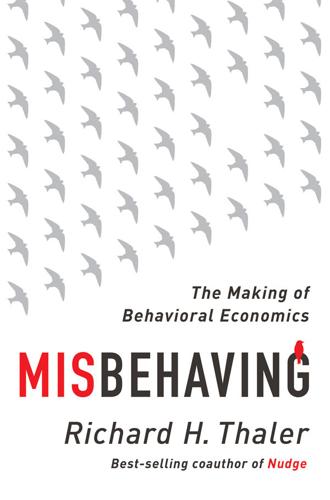
Misbehaving: The Making of Behavioral Economics
by
Richard H. Thaler
Published 10 May 2015
Many organizational errors could have been easily prevented if someone had been willing to tell the boss that something was going wrong. One vivid example of this comes from the high-stakes world of commercial aviation, as chronicled by Atul Gawande, a champion of reducing Human error, in his recent book The Checklist Manifesto. Over 500 people lost their lives in a 1977 runway crash because the second officer of a KLM flight was too timid to question the authority of the captain, his “boss.” After mishearing instructions about another plane still on the same runway, the captain continued to speed the plane forward for takeoff.
…
See also World Bank (2015). 353 repeatedly and rigorously tested: See Post et al. (2008) and van den Assem, van Dolder, and Thaler (2012) on game shows, Pope and Schweitzer (2011) on golf, Barberis and Thaler (2003) and Kliger, van den Assem, and Zwinkels (2014) for reviews of behavioral finance, and Camerer (2000) and DellaVigna (2009) for surveys of empirical applications of behavioral economics more generally. 353 intriguing finding by Roland Fryer: Fryer (2010). 354 The team of Fryer, John List, Steven Levitt, and Sally Sadoff: Fryer et al. (2013). 354 a recent randomized control trial: Kraft and Rogers (2014). 355 Field experiments are perhaps the most powerful tool we have: Gneezy and List (2013). 356 “If you don’t write it down, it doesn’t exist”: Ginzel (2014). 356 his recent book The Checklist Manifesto: Gawande (2010), pp. 176–77. 356 Into Thin Air: Krakauer (1997). 357 99% of the work is done by the choice architecture: Another example is Alexandre Mas who (sometimes collaborating with Alan Krueger) has shown that after labor disputes that go badly for workers, the quality of work declines.
…
“A Dual-Self Model of Impulse Control.” American Economic Review 96, no. 5: 1449–76. Gabaix, Xavier, and David Laibson. 2006. “Shrouded Attributes, Consumer Myopia, and Information Suppression in Competitive Markets.” Quarterly Journal of Economics 121, no. 2: 505–40. Gawande, Atul. 2010. The Checklist Manifesto: How to Get Things Right. New York: Metropolitan Books. Geanakoplos, John, David Pearce, and Ennio Stacchetti. 1989. “Psychological Games and Sequential Rationality.” Games and Economic Behavior 1, no. 1: 60–79. Ginzel, Linda E. 2015. “The Green Pen—Linda Ginzel: In the Classroom.” Chicago Booth Magazine, Winter.
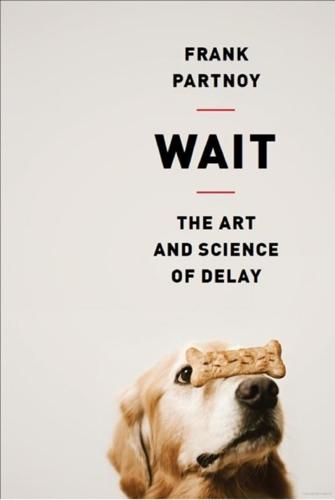
Wait: The Art and Science of Delay
by
Frank Partnoy
Published 15 Jan 2012
Gurpreet Dhaliwal can’t turn away those patients he doesn’t quite understand. He can’t wait for the easiest possible diagnosis. He is obligated to try to help everyone. He might see nine cases that are like routine fastballs. But he also has to be ready to hit the one curve. In Atul Gawande’s provocative and insightful book The Checklist Manifesto, he shows how doctors can use checklists to save lives by reducing mistakes in medical decision-making, particularly during hospital surgery.12 He also advocates checklists for other nonmedical professionals, including airline pilots and financial professionals. Checklists serve as a reminder when our memory fails and as a guard against cognitive mistakes.
…
Richard, Confidence Game: How Hedge Fund Manager Bill Ackman Called Wall Street’s Bluff (Bloomberg Press, 2010). 10. Ibid., p. 46. 11. Jerome Kassirer, John Wong, and Richard Kopelman, Learning Clinical Reasoning, 2nd ed. (Lippincott Williams & Wilkins, 2010), p. xvii–xviii. 12. Atul Gawande, The Checklist Manifesto: How to Get Things Right (Picador, 2009). 13. Ibid., p. 154. 14. The concept of a diagnostic time-out is raised in John W. Ely, Mark L. Graber, and Pat Croskerry, “Checklists to Reduce Diagnostic Errors,” Academic Medicine 86(3, 2011): 1–7, an excellent recent article exploring the use of checklists in diagnostic decision-making, particularly under uncertainty and time pressure. 15.
…
., 52, 94 Captain Corelli’s Mandolin, 117 Cardiovascular system, 9, 10 Carey, Ron, 131 Carmichael, Stokely, 84 Carney, Dana, 83, 94n, 95, 96, 97, 98, 100 study by, 84, 94, 99 Carson, Johnny, 113–114 CBS News, 188, 195 Central nervous system, 13 CEOs female, 91–92 incentives for, 208 pay for, 208 Checklist Manifesto, The (Gawande), 181–182 Checklists, 181–183 Checkmate five-move, 220, 220 (fig.), 221, 222 three-move, 219–220, 219 (fig.), 221, 222 Chess, 46, 219–220, 221, 222 Chesterfield, Earl of, 148 Child development, delay and, 15 Christie, Agatha, 149 Chronicle of Higher Education, 169 Cicero, 149 Clap game, 112, 113 Clark, Walker, 109–110, 112–113 clap game and, 112 communication and, 114 panic and, 110–111, 110n squirmish and, 113 on Stewart, 113–114 Clarke, Arthur C., 103 Climate change, 238–239 discount rates and, 239, 242 judgments about, 239–240 Clinton, Bill, 114, 131, 132, 135, 149, 235 apology by, 143–144 Clock time, 203, 207–208 event time and, 198–199, 200 hourly work and, 204 human behavior and, 197, 198 CNBC, 174 CNOOC, Unocal and, 192 Coca-Cola, 50, 51 Comedy, time and, 106 Communication, 38 silence and, 115 Computers, 31 programming/monitoring, 44 stock trading and, 35 Connors, Jimmy, 19, 20–21, 27 delay by, 24–25 service return of, 22–23 Conscious thought, 20, 64, 70, 100, 136 bypassing, 113 decision-making and, 87 Costs, 165 benefits versus, 240 Council of Economic Advisers, 94, 235 Covey, Stephen, 149 Cox, Archibald, 132 Craig, Larry: resignation of, 143 Cramer, Jim, 174–175, 178 Cranial nerve, 1 Cravings, stimuli for, 54 Credit cards, 156, 158, 163, 165 Crimes and Misdemeanors (Allen), 107 Criqui, Don, 66, 77–78 Critchfield, Jeff, 186–187 Cronkite, Walter, 188 Csonka, Larry, 65, 77, 78 Cuddy, Amy, 97 Curry, Tom, 78 Daily Show, The, 107 Dalio, Ray, 177 Damage, repairing, 138, 139 Damasio, Antonio, 68, 69 Darwin, Charles, 3, 124 Data, 38, 76, 88 Dating, 117–118, 120, 124, 125, 128, 244 OODA and, 127 De Benières, Louis, 124 Deadlines, working on, 193, 194 Decision-making, 20, 59, 69, 71, 106, 117, 121, 165, 186–187, 233, 238 aids, 70 bad, 104 biological reactions in, 79 complexities of, 245–246 conscious system and, 87 delay and, x, xii, 31, 76, 244–245, 246 discount rates and, 161 financial, 176 good, 244 happiness and, 123 human versus computer, 41 improving, 126, 180, 181 late-game, 67 medical, 180–181, 182, 186 military, 191 novices and, 76, 77 personal/professional, xii at preconscious speeds, 49 premortem and, 76 process of, 126, 127, 244 pros/cons of, 72 research on, x-xi, 28 self-control and, 13 short-term, 155, 243 slow, 61, 174 snap, 27, 100, 111, 124, 128, 183, 245 stimulus and, 70 studies on, 6, 78 thinking about, xi, 16–17 time and, x, xii, 58, 76, 122, 187 unconscious preferences and, 83 understanding, x, 16 value of human life and, 240–242 Delay, xii, 29, 38, 64, 107, 108, 115, 120, 138, 155–156, 159, 183 amount of, 141, 186 child development and, 15 cycle of, 145 discount rates and, 164 good/bad, 147, 156, 158 hardwired, 69 insight and, 195 irrational, 150 length of, 244 managing, xii, 17, 144, 168 masters of, 116, 173 minimizing, 39–40, 44 optimizing, 39, 44 reacting to, 145 role of, x, 48, 63, 184 skills/developing, 14 superfast, 16 thresholds, 114 time and, 121 understanding, 137 Deliberation, 20, 78, 111, 113, 115 Department of Transportation, value of human life and, 242 DeVoe, Sanford, 56, 57, 59, 205 fast food and, 55, 58, 206 incentives/time and, 53 McDonald’s stimuli and, 54 on time-saving devices, 58 Dhaliwal, Gurpreet, 180–181, 184–185, 186 Diagnostic Error in Medicine (DEM), 180 Diallo, Amadou, 86n Discount rates, 156, 157–158, 159–160, 162–163, 224, 237, 240 climate change and, 239, 242 decision making and, 161 high, 163, 164, 167 kinship and, 64 long-term, 161, 165 pigeons and, 161 probabilities and, 155 procrastination and, 153, 154, 158, 164 short-term, 161, 163, 165, 178 sustainability and, 238–239 Draper, Don, 51 Drucker, Peter, 149 Durden, Tyler, 49 E-Mini futures contracts, 41, 42, 43 Eagleman, David, 104, 105 Econometrica (Kahneman and Tversky), 157 Economic models, 157, 161 Economics, 150, 207, 209, 234 behavioral, x, xi, 148 psychology and, 176 Economy, time and, 200, 203 Edison, Thomas, 212, 214, 218, 226 Edwards, Herman, 78, 79 Edwards, John, 143 Edwards, Jonathan, 148 Efficiency, 198, 199, 200, 227, 228 Efficient market theory, 176 Einstellung effect, 218, 219, 221, 227 dangers of, 223–224 defending against, 222–223 Ekman, Paul: face and, 90 Elected-official-sexual-transgression-apology playbook, 142–143, 144 Ellington, Duke, 149 Emotional problems, 7, 10, 13, 15, 16, 104 Emotional reactions, 7, 69 apologies and, 136, 137–138 Emotions, 2, 5, 115 animal responses and, 16 money and, 206 Ensign, John, 143 Environmental Protection Agency, value of human life and, 242 Erythema multiforme, 186 Ethnicity, 184–185 European financial crisis (2012), 236 Evans, James: study by, 203, 204 Event time, 208 clock time and, 198–199, 200 Evert, Chris, 19, 20–21, 22 delay by, 24–25 visual reaction time of, 23 Explanation, 138, 139, 140, 141 Eye contact, 101 Eye movements, 222 Facebook, 119, 215 Faces attractive, 90–91, 92 glancing at, 93–94 Fama, Eugene, 176 Fast food, 53, 54 advertising for, 59–60 emotional/mental health and, 56 logos for, 55, 56, 57, 59, 61, 100, 205 stimuli for, 57, 58 studies on, 58–59, 206 subliminal messages for, 53–58 Fast Food Nation (Schlosser), 54 Fear, confronting, 9 Federal Communications Commission, 51–52 Federal Emergency Management Agency, 238 Feedback, 3, 5, 38, 185 FEMA, 238 Fencing, speed of, 27 Ferrari, Joseph, 150, 151 Fey, Tina, 140 F.I.A.S.C.O.
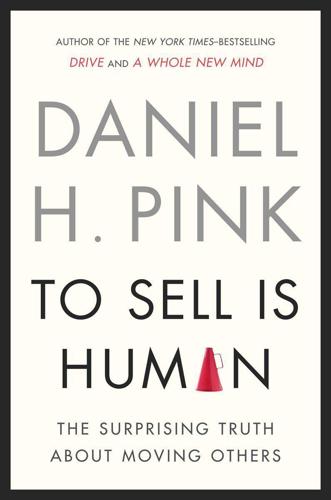
To Sell Is Human: The Surprising Truth About Moving Others
by
Daniel H. Pink
Published 1 Dec 2012
See also “Patient Photos Spur Radiologist Empathy and Eye for Detail,” RSNA Press Release, December 2, 2008; Dina Kraft, “Radiologist Adds a Human Touch: Photos,” New York Times, April 7, 2009. 7. Turner and Hadas-Halpern, “The Effects of Including a Patient’s Photograph.” 8. “Patient Photos Spur Radiologist Empathy and Eye for Detail,” ScienceDaily, December 14, 2008, available at http://bit.ly/JbbEQt. 9. See Atul Gawande, The Checklist Manifesto: How to Get Things Right (New York: Picador, 2011). 10. See, for instance, “Disconnection from Patients and Care Providers: A Latent Error in Pathology and Laboratory Medicine: An Interview with Stephen Raab, MD,” Clinical Laboratory News 35, no. 4 (April 2009). 11. Sally Herships, “The Power of a Simple ‘Thank You,’” Marketplace Radio, December 22, 2010. 12.
…
Adam M. Grant and David A. Hofmann, “It’s Not All About Me: Motivating Hand Hygiene Among Health Care Professionals by Focusing on Patients,” Psychological Science 22, no. 12 (December 2011): 1494–99. 14. Ibid., 497. 15. Atul Gawande, “The Checklist,” New Yorker, December 10, 2007; Gawande, The Checklist Manifesto: How to Get Things Done Right (New York: Picador, 2011). 16. Grant and Hofmann, “It’s Not All About Me,” 498. 17. See, for instance, Dan Ariely, Anat Bracha, and Stephan Meier, “Doing Good or Doing Well? Image Motivation and Monetary Incentives in Behaving Prosocially,” American Economic Review 99, no. 1 (March 2009): 544–55; Stephan Meier, The Economics of Non-Selfish Behaviour: Decisions to Contribute Money to Public Goods (Cheltenham, UK: Edward Elgar Publishing Limited, 2006); Stephan Meier, “A Survey of Economic Theories and Field Evidence on Pro-Social Behavior,” in Bruno S.
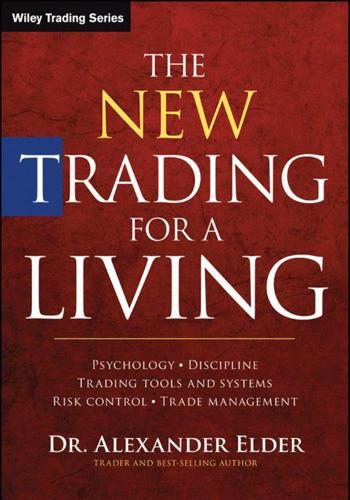
The New Trading for a Living: Psychology, Discipline, Trading Tools and Systems, Risk Control, Trade Management
by
Alexander Elder
Published 28 Sep 2014
A system becomes your anchor of rational behavior amidst the turbulence of the market. It goes without saying that a proper system is written down. This needs to be done because it's easy to forget some essential steps when stressed by live markets. Dr. Atul Gawande in his remarkable book The Checklist Manifesto makes a convincing case for using checklists to raise performance levels in a large variety of demanding endeavors, from surgery and construction to trading. A mechanical trader develops a set of rules, back-tests them on historical data, and then puts his system on autopilot. Going forward, his software starts flashing orders for entries, target, and stops, and a mechanical trader is supposed to place them exactly as shown.
…
., Elliott Wave Principle (Gainesville, GA: New Classics Library, 1978). Gajowiy, Nils, Personal communication, 2012. Gallacher, William, Winner Takes All—A Privateer's Guide to Commodity Trading (Toronto: Midway Publications, 1983). Gann, W. D., How to Make Profits in Commodities (Chicago: W. D. Gann Holdings, 1951). Gawande, Atul, The Checklist Manifesto: How to Get Things Right (New York: Henry Holt and Company, 2011) Gleick, James, Chaos: Making a New Science (New York: Viking/Penguin, 1987). Goepfert, Jason, SentimenTrader.com Granville, Joseph, New Strategy of Daily Stock Market Timing for Maximum Profit (Englewood Cliffs, NJ: Prentice Hall, 1976).
…
See also Japanese candlesticks Cash trades, futures compared to Catastrophic stops Ceilings, for commodities CFDs (contracts for difference) CFTC, see Commodity Futures Trading Commission Channels in A-trades Average True Range combining divergences and constructing in day-trading defined and moving averages in setting profit targets symmetrical Channel trading systems constructing channels and mass psychology standard deviation (Bollinger bands) symmetrical trading rules Chaos theory Chart analysis bar charts chaos theory detecting bias in diagonals in Efficient Market theory history of charting and insider trading Japanese candlesticks kangaroo tails “nature's law” Random Walk subjectiveness in support and resistance causes of strength of trading rules and true and false breakouts trends and trading ranges and conflicting timeframes of markets deciding to trade or wait hard right edge identifying and mass psychology as window into mass psychology Charting Commodity Market Price Behavior (L. Dee Belveal) Chart patterns: defined at right edge of charts RSI trendlines subjective interpretation of swings of mass psychology shown in Checklists Checklist Manifesto, The (Atul Gawande) Childhood, mental baggage from Churchill, Winston Classical chart analysis, see Chart analysis “Climax bottoms” Climax indicator Closing prices: Advance/Decline line on candlestick charts of daily and weekly bars of daily charts as most important consensus of value relationship of opening prices and for settlement of trading accounts Cohen, Abraham W.
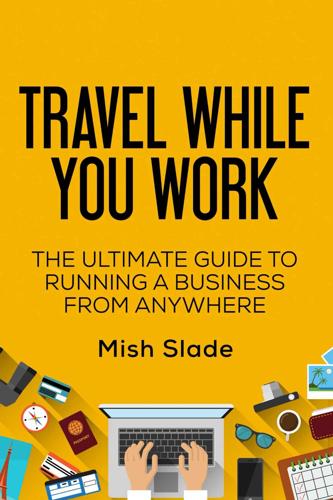
Travel While You Work: The Ultimate Guide to Running a Business From Anywhere
by
Mish Slade
Published 13 Aug 2015
Resources to help with your routine Here's a selection of books, websites and tools that might inspire you to develop your own routine and good working habits: The Tiny Habits Method (website and free course): www.worktravel.co/tinyhabits Coach Me (app that helps you reach your goals): www.worktravel.co/coach Mini Habits: Smaller Habits, Bigger Results (book by Stephen Guise): www.worktravel.co/minihabits The Checklist Manifesto: How to Get Things Right (book by Atul Gawande): www.worktravel.co/checklist There are some fantastic answers on Quora to the question "What are the best daily routines of highly productive people?": www.worktravel.co/quora The Quora answers to the question "What are the best ways for non 9-5 types to build structure and social interaction into their daily routines?"
…
Calculate your cost of living The Birdy: www.worktravel.co/birdy Numbeo's cost-of-living tool: www.worktravel.co/numbeo Trail Wallet: www.worktravel.co/trailwallet Taxes Greenback Expat Tax Services: www.worktravel.co/greenback Small Business Bodyguard: www.worktravel.co/bodyguard Flag Theory: www.worktravel.co/flag Foreign Earned Income Exclusion (US residents only): www.worktravel.co/irs CHAPER 3: GUARD YOUR DATA Protect Your Tech (book): www.worktravel.co/protectyourtech HTTP Everywhere: www.worktravel.co/httpseverywhere Torguard VPN: www.worktravel.co/torguard LastPass (password management): www.worktravel.co/lastpass CHAPTER 4: BE A PRODUCTIVITY POWERHOUSE Have a routine The Tiny Habits Method (website and free course): www.worktravel.co/tinyhabits Coach Me (app that helps you reach your goals): www.worktravel.co/coach Mini Habits: Smaller Habits, Bigger Results (book by Stephen Guise): www.worktravel.co/minihabits The Checklist Manifesto: How to Get Things Right (book by Atul Gawande): www.worktravel.co/checklist Quora Q&A – "What are the best daily routines of highly productive people?": www.worktravel.co/quora Quora Q&A – "What are the best ways for non 9-5 types to build structure and social interaction into their daily routines?"
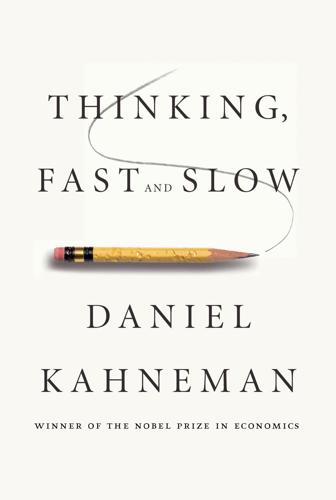
Thinking, Fast and Slow
by
Daniel Kahneman
Published 24 Oct 2011
Applying Apgar’s score, the staff in delivery rooms finally had consistent standards for determining which babies were in trouble, and the formula is credited for an important contribution to reducing infant mortality. The Apgar test is still used every day in every delivery room. Atul Gawande’s recent A Checklist Manifesto provides many other examples of the virtues of checklists and simple rules. The Hostility to Algorithms From the very outset, clinical psychologists responded to Meehl’s ideas with hostility and disbelief. Clearly, they were in the grip of an illusion of skill in terms of their ability to make long-term predictions.
…
Apgar: Virginia Apgar, “A Proposal for a New Method of Evaluation of the Newborn Infant,” Current Researches in Anesthesia and Analgesia 32 (1953): 260–67. Mieczyslaw Finster and Margaret Wood, “The Apgar Score Has Survived the Test of Time,” Anesthesiology 102 (2005): 855–57. virtues of checklists: Atul Gawande, The Checklist Manifesto: How to Get Things Right (New York: Metropolitan Books, 2009). organic fruit: Paul Rozin, “The Meaning of ‘Natural’: Process More Important than Content,” Psychological Science 16 (2005): 652–58. 2 {ce moderated by an arbiter: Mellers, Hertwig, and Kahneman, “Do Frequency Representations Eliminate Conjunction Effects?”
…
Murphy, “A Theory of Rational Addiction,” Journal of Political Economics 96 (1988): 675–700. Nudge: Richard H. Thaler and Cass R. Sunstein, Nudge: Improving Decisions About Health, Wealth, and Happiness (New Haven: Yale University Press, 2008). can institute and enforce: Atul Gawande, The Checklist Manifesto: How to Get Things Right (New York: Holt, 2009). Daniel Kahneman, Dan Lovallo, and Oliver Sibony, “The Big Idea: Before You Make That Big Decision…” Harvard Business Review 89 (2011): 50–60. distinctive vocabulary: Chip Heath, Richard P. Larrick, and Joshua Klayman, “Cognitive Repairs: How Organizational Practices Can Compensate for Individual Shortcomings,” Research in Organizational Behavior 20 (1998): 1–37.
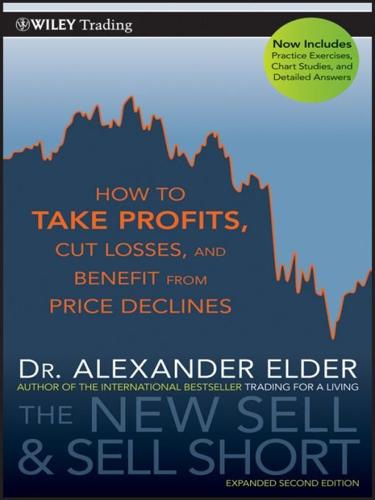
The New Sell and Sell Short: How to Take Profits, Cut Losses, and Benefit From Price Declines
by
Alexander Elder
Published 1 Jan 2008
If a pilot thinks he smells smoke in the cockpit, he does not just wrinkle his nose and say “Geez, smoke. I wonder what I should do....” Instead of scratching and thinking, he opens his manual to the Smoke page and, with his co-pilot, goes through clearly defined “if-then” questions and answers, which lead to specific actions. An excellent recent book on developing a checklist is The Checklist Manifesto by Dr. Atul Gawande. Still, even a printed decision-making tree, approved by the best airline, can never be complete. In his fascinating book The Black Box, Malcolm MacPherson serves up dozens of transcripts from the black boxes of crashed airliners. A trader can learn a great deal from watching how some pilots fall apart under pressure while others rise up to the challenge.
…
Trading for a Living: Psychology, Trading Tactics, Money Management. New York, NY: John Wiley & Sons, 1993. Faith, Curtis. The Way of the Turtle. New York, NY: McGraw Hill, 2007. Friedentag, Harvey Conrad. Options—Investing Without Fear. Chicago, IL: International Publishing Corporation, 1995. Gawande, Atul, The Checklist Manifesto. Metropolitan Books, 2009. Grove, Nicholas. Personal communication, 2004. Hieronymus, Thomas A. Economics of Futures Trading. New York, NY: Commodity Research Bureau, Inc., 1971. Kreiz, Shai. Personal communication, 2007. Lewis, Michael. The Big Short: Inside the Doomsday Machine.
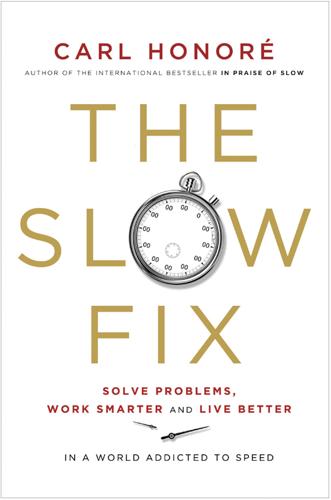
The Slow Fix: Solve Problems, Work Smarter, and Live Better in a World Addicted to Speed
by
Carl Honore
Published 29 Jan 2013
Image of human eyes boosts honesty: Melissa Bateson, Daniel Nettle and Gilbert Roberts, “Cues of being watched enhance cooperation in a real-world setting,” Biology Letters, Volume 2 (2006), pp. 412–14. Band of brothers: William Darryl Henderson, Cohesion: The Human Element in Combat (Washington, DC: National Defense University Press, 1985), pp. 22–3. Sir Richard Branson on great delivery: From column in Entrepreneur, 20 April 2011. Knowing names helps teams: Atul Gawande, The Checklist Manifesto: How to Get Things Right (London: Profile, 2010), p. 108. Happy staff more creative: Bill Breen, “The 6 Myths of Creativity,” Fast Company, 19 December 2007. Chapter 13 – Play: Solving Problems One Game at a Time Spanish housework study: Salomí Goñi-Legaz, Andrea Ollo-López and Alberto Bayo-Moriones, “The Division of Household Labour in Spanish Dual Earner Couples: Testing Three Theories,” Sex Roles, Volume 63, Numbers 7–8 (2010), pp. 515–29.
…
Artscience: Creativity in the Post-Google Generation. Cambridge, MA: Harvard University Press, 2008. Edwards, David. The Lab: Creativity and Culture. Cambridge, MA: Harvard University Press, 2010. Fraenkel, Peter. Sync Your Relationship: Save Your Marriage. New York: Palgrave MacMillan, 2011. Gawande, Atul. The Checklist Manifesto: How to Get Things Right. London: Profile, 2010. Gladwell, Malcolm. Blink: The Power of Thinking without Thinking. London: Allen Lane, 2006. Gladwell, Malcolm. Outliers: The Story of Success. London: Allen Lane, 2008. Heath, Chip and Dan. Made to Stick: Why Some Ideas Survive and Others Die.

AIQ: How People and Machines Are Smarter Together
by
Nick Polson
and
James Scott
Published 14 May 2018
That change was made only after a team of 19 experts conducted a massive synthesis of all available data and concluded that the new recommendations were likely to prevent 11 false positives out of every 500 women screened, with no discernible impact on the number of deaths from breast cancer.41 Medical checklists are great, and the manner in which they’re created and updated represents a triumph of data over anecdote—something that Florence Nightingale, were she still around, could take immense pride in. Checklists save lives by helping doctors catch subtle clues when making complex decisions. Inspired by his experiences as a surgeon, the medical writer Atul Gawande has even written The Checklist Manifesto, about how checklists can help in making complex decisions everywhere, not just in medicine. He makes a good case. But checklists can fail—especially when they rely on what Katherine Heller calls “threshold thinking.” To see this, let’s return to the trend that’s so obvious from the scatter plot of Joe’s kidney readings that we showed you earlier.
…
Correctional Offender Management Profiling for Alternative Sanctions (COMPAS) Craven, John credit cards digital assistants and fraud Crimean War criminal justice system cucumbers data, missing data accumulation, pace of data mining data science anomaly detection and assumptions and democracy and feature engineering health care and imputation institutional commitment and legacy of Florence Nightingale lurking variable pattern recognition and personalization and prediction rules and user-based collaborative filtering data sets anomalies in assumptions and bias in, bias out ImageNet Visual Recognition Challenge massive pattern recognition and privacy sharing databases compilers and health care natural language processing Netflix smart cities de Moivre’s equation (square-root rule) decision-making anomaly detection and human voting deep learning corn yields and electricity demands and gender portrayals in film and honeybees and prediction rules and privacy and Descartes Labs Dickens, Charles Christmas Carol, A Martin Chuzzlewit digital assistants Alexa (Amazon) algorithms and Google Home medicine and speech recognition and DiMaggio, Joe Dole, Bob Duke University early-warning systems Earth Echo, Amazon e-commerce Eggo, Rosalind Einstein, Albert energy industry Facebook advertisers anomaly detection “data for gossip” bargain data sets data storage image classification and recognition market dominance pattern-recognition system personalization presidential election of 2016 and targeted marketing Facebook Messenger fake news financial industry Bayes’s rule and investing gambling strategy indexing strategy Fitbit Ford, Henry Formula 1 racing Fowler, Samuel Lemuel Friedman, Milton Friends (television series) Gawande, Atul: The Checklist Manifesto Geena Davis Institute on Gender in Media gender bias in films stereotypes word vectors and Google anomaly detection data sets data storage image classification Inception (neural-network model) market dominance pattern-recognition system personalization search engine self-driving car speech recognition TensorFlow word2vec model Google Google DeepMind Google Doodle Google Flu Trends Google Home Google Ngram Viewer Google Translate Google Voice Gould, Stephen Jay GPS technology Great Andromeda Nebula.
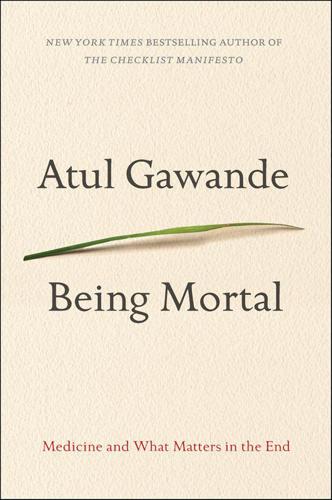
Being Mortal: Medicine and What Matters in the End
by
Atul Gawande
Published 6 Oct 2014
And that is why it is dedicated to her. Also by Atul Gawande Complications: A Surgeon’s Notes on an Imperfect Science Better: A Surgeon’s Notes on Performance The Checklist Manifesto: How to Get Things Right About the Author ATUL GAWANDE is the author of three bestselling books: Complications, a finalist for the National Book Award; Better, selected by Amazon.com as one of the ten best books of 2007; and The Checklist Manifesto. He is also a surgeon at Brigham and Women’s Hospital in Boston, a staff writer for The New Yorker, and a professor at Harvard Medical School and the Harvard School of Public Health.
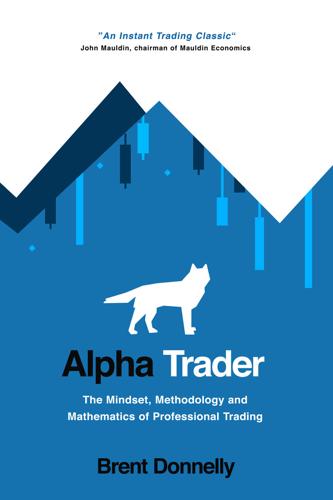
Alpha Trader
by
Brent Donnelly
Published 11 May 2021
Including… Becoming more organized. The Baumeister and Gardner book on willpower that I referenced earlier is a good start if you want to become more organized. Also useful: The Seven Habits of Highly Effective People by Stephen Covey. Written in 1989 but still popular for a reason. The Checklist Manifesto by Atul Gawande. Pretty much exactly what it sounds like. Many interesting examples. The Power of Habit by Charles Duhigg. Almost everything about staying organized comes down to habit. Note that these books can be boiled down into bullet points that will give you 80% of the benefit in 20% of the time.
…
New Canaan, Connecticut 2021 APPENDIX A FURTHER READING BOOKS Trading classics Market Wizards (series), Jack Schwager (1989) Reminiscences of a Stock Operator, Edwin Lefèvre (1923) Luck vs. skill, process vs. outcome The Success Equation, Michael Mauboussin (2012) Thinking in Bets, Annie Duke (2018) Be disciplined Willpower, Baumeister and Tierney (2012) The Science of Self-Discipline, Peter Hollins (2017) The Disciplined Trader, Mark Douglas (1990) Behavioral finance bibles Thinking, Fast and Slow, Daniel Kahneman (2011) Irrational Exuberance, Robert Shiller (2000) Get organized The Seven Habits of Highly Effective People, Stephen Covey (1988) The Checklist Manifesto, Atul Gawande (2009) The Power of Habit, Charles Duhigg (2012) Be self-aware The Power of Now, Eckhart Tolle (1997) Breath, James Nestor (2020) The Hour Between Dog and Wolf, John Coates (2012) Get quantitative Fortune’s Formula, William Poundstone (2005) Superforecasting, Dan Gardner and Philip Tetlock (2015) Fooled by Randomness, Nassim Taleb (2001) Fooled by Technical Analysis, Michael Harris (2015) A Man for All Markets, Edward Thorp (2017) Risk, Dan Gardner (2008) How to Lie with Statistics, Darrell Huff (1954) BLOGS, PODCASTS AND NEWSLETTERS Aspen Trading daily and intraday trading newsletter, Dave Floyd Epsilon Theory website, podcast and newsletter, Ben Hunt and Rusty Guynn Exante blog on Substack, Jens Nordvig et al.
…
See market catalysts central banks idea generation and meetings of, 395 liquidity and, 263 as market participants, 274 studying, 307—308 See also specific central banks charts, creating, 292—293 bar chart, 294 Bloomberg “Market Picture,” 294 Market Profile, 294 point and figure, 292, 293 charts, forecasting and, 324 chasing bias, 241 Checklist Manifesto, The (A. Gawande), 95, 491 Cheer Hedge, 172, 204 Chicago Board of Trade (CBOT), 284 China deval (2015), 441 China/US Trade War (2018—2019), inaccurate media accounts about, 98 Citi Pain Index, 345 clustering illusion, 217 See also apophenia CME Market Profile guide, 294, 331 CNBC, 83, 104, 235, 243, 259, 407 CNN Fear and Greed indicator, 345, 443 coach, trading, 106, 121, 122 Coates, John, 132, 491 Cognitive Reflection Test (CRT), 62, 65—66, 69, 70, 71, 179, 186, 249 COMEX, 286 commissions, 277 commodity trading advisors (CTAs), 159, 301, 312 common knowledge, questionable, 259—265 bad economic news and stocks, 263—264 examples, 260—265 gold, 262-263 interest rates, 260, 261 stock market crashes, 264—265 stocks and bonds, 260—261 company earnings, idea generation and, 395 Comprehensive Assessment of Rational Thinking (CART), 62 confidence, calibrated, 34, 180—181 as trader attribute, 72, 75, 81 See also overconfidence confirmation bias, 80—81, 171, 197—203, 346 endowment effect and, 199 filtering trade ideas and, 410 highly intelligent people and, 63 how to combat, 199—203 narrative cycle and, 299 Stanford experiment, 200 conformity, social, 82—83 conformity bias, 83 conscientiousness, 47—48, 72, 383 academic achievement and, 51, 52 age and, 48, 48, 76 decisiveness as sub-trait of, 56, 119 growth mindset and, 95 how to boost, 56—58 impulse control as sub-trait of, 56 income and, 49, 50, 51 industriousness as sub-trait of, 56 orderliness as sub-trait of, 56 organized people as, 95 persistence as sub-trait of, 56 reliability as sub-trait of, 56 sport achievement and, 51, 52 success, 52, 56, 58, 71 See also self-control; self-discipline continuation patterns, 161 continuous improvement mindset, 58, 91 contrarians, 32, 34, 82, 83, 233—234, 300, 345 conviction, 107, 112, 113, 194, 256, 323, 355, 365, 369—370, 379, 493 See also conviction levels conviction levels, 370—377 Type I normal trade, 370, 372, 373, 375 Type II unique trade, 370—373, 374 Type III outlier trade, 373—374, 376—377 cooling off levels, 118—119 Corgnet, Brice, 66 correlated markets, filtering trade ideas and, 409 correlation and intermarket analysis, 162 costs.
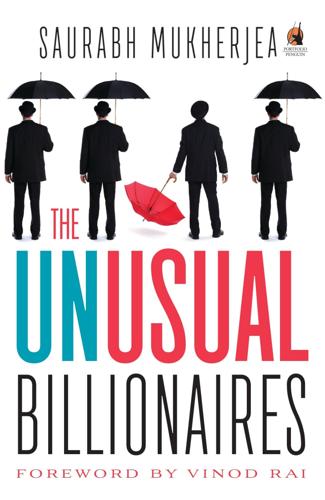
The Unusual Billionaires
by
Saurabh Mukherjea
Published 16 Aug 2016
CHAPTER 10 A Checklist for Long-term Investors ‘An investment operation is one which, upon thorough analysis, promises safety of principal and an adequate return. Operations not meeting these requirements are speculative.’ —Benjamin Graham, The Intelligent Investor (1949) ‘The volume and complexity of what we know has exceeded our individual ability to deliver its benefits correctly, safely, or reliably.’ —Atul Gawande, The Checklist Manifesto: How to Get Things Right (2009) As analysts, my community is trained to comprehensively and objectively analyse a company and provide a recommendation to investors to buy or sell that company’s stock at its current market price. I routinely study annual reports, read interviews of company promoters, and follow news that affects the Indian economy and industries.
…
More generally, in the investment management industry and elsewhere, a checklist helps us to stay focused and enforce an effective, objective and thorough decision-making process. Taking another leaf out of Gawande’s book, in order to remain simple and practical, my checklist focuses only on critical elements. As Gawande writes in The Checklist Manifesto, ‘Good checklists, on the other hand are precise. They are efficient, to the point, and easy to use even in the most difficult situations. They do not try to spell out everything—a checklist cannot fly a plane. Instead, they provide reminders of only the most critical and important steps—the ones that even the highly skilled professional using them could miss.
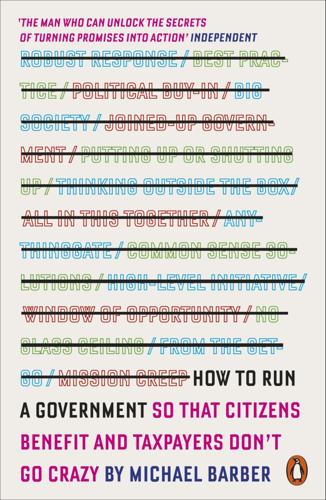
How to Run a Government: So That Citizens Benefit and Taxpayers Don't Go Crazy
by
Michael Barber
Published 12 Mar 2015
And if it were an individual’s primary goal in life, that life would indeed seem narrow and unambitious. Understood, however, as the prerequisite of great accomplishment, diligence stands as one of the most difficult challenges facing any group of people who take on tasks of risk and consequence.6 The point could not be better made. In his later book The Checklist Manifesto, Gawande builds on this theme. Mistakes will happen, he argues. Sometimes this will be because we don’t know enough; sometimes it will be because we didn’t apply what we did in fact already know. The solution, Gawande goes on to argue, is simple. Experts, including top professionals, need checklists.
…
M. (2005), The Moral Consequences of Economic Growth, New York, Alfred Knopf Friedman, M. (2005), Trying Hard is Not Good Enough, Victoria, Canada, Trafford Publishing Friedman, T. (2006), The World Is Flat: A Brief History of the Twenty-first Century, London, Penguin — and Mandelbaum, M. (2011), That Used to Be Us: What Went Wrong with America and How it Can Come Back, New York, Little, Brown Fukuyama, F. (2011), The Origins of Political Order: From Prehuman Times to the French Revolution, London, Profile Books — (2014), Political Order and Political Decay: From the Industrial Revolution to the Globalisation of Democracy, London, Profile Books Garman, J. (2014), Europe’s Power: Re-energising a Progressive Climate and Energy Agenda, London, Institute for Public Policy Research Gawande, A. (2008), Better: A Surgeon’s Notes on Performance, London, Profile Books — (2010), The Checklist Manifesto: How to Get Things Right, London, Profile Books Ghani, A. and Lockhart, C. (2009), Fixing Failed States: A Framework for Rebuilding a Fractured World, Oxford, Oxford University Press Giuliani, R. (2002), Leadership, New York, Little, Brown Gold, J. (2014), International Delivery: Centres of Government and the Drive for Better Policy Implementation,London, Institute for Government Goodwin, D.
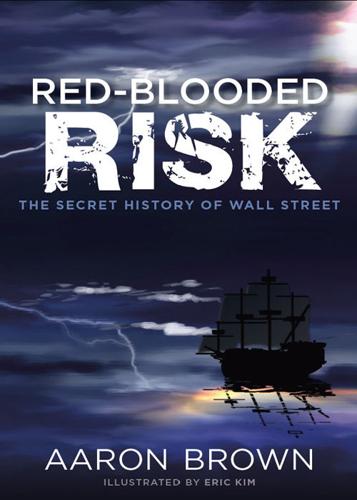
Red-Blooded Risk: The Secret History of Wall Street
by
Aaron Brown
and
Eric Kim
Published 10 Oct 2011
Good examples are To Engineer Is Human: The Role of Failure in Successful Design by Henry Petroski, Inviting Disaster: Lessons from the Edge of Technology by James R. Chiles, Normal Accidents: Living with High-Risk Technologies by Charles Perrow, The Limits of Safety by Scott Douglas Sagan, The Upside of Turbulence: Seizing Opportunity in an Uncertain World by Donald N. Sull, and The Checklist Manifesto: How to Get Things Right by Atul Gawande. I have four recommendations if your interest is game theory. All are technical but readable. I went to Harvard with Drew Fudenberg, who wrote (with David Levine) A Long-Run Collaboration on Games with Long-Run Patient Players. A few years later, Colin Camerer was in the University of Chicago PhD program with me.
…
Camerer, Colin Capital: allocation at-risk formation requirement Capital asset pricing model (CAPM) Capital Ideas (Bernstein) Capital Offense (Hirsh) Carnap, Rudolph Cash, Lehman Brothers and Cash Nexus (Ferguson) Chance, Luck, and Statistics (Levinson) Chances Are (Kaplan) Change of numeraire Checklist Manifesto, The (Gawande) Chernow, Ron Chicago Board Options Exchange Volatility Index (VIX) Chief risk officer (CRO) Chiles, James Cincinnati Kid, The ( Jessup) Citibank Clearinghouses CMOs. See Collateralized mortgage obligations (CMOs) Cohen, Muhammad Cohen, William Coherent Stress Testing (Rebonato) Collateralized mortgage obligations (CMOs) Commodity futures Company of Strangers, The (Seabright) Complete TurtleTrader, The (Covel) Connor, Gregory Conquering Risk (Feustel) Controllers/comptrollers Covel, Michael Cowboys Full (McManus) Cox, Richard Cramer, Jim Credit derivatives Credit stress test CRO.
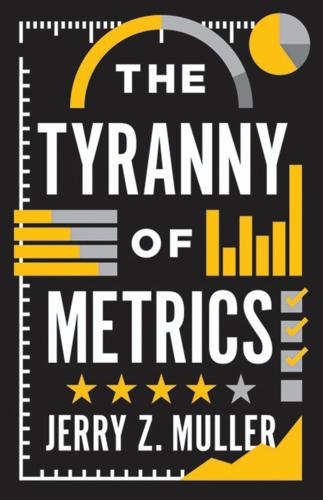
The Tyranny of Metrics
by
Jerry Z. Muller
Published 23 Jan 2018
Also valuable is Adrian Perry, “Performance Indicators: ‘Measure for Measure’ or ‘A Comedy of Errors’?” in Caroline Mager, Peter Robinson, et al. (eds.), The New Learning Market (London, 2000). 5. Laura Landro, “The Secret to Fighting Infections: Dr. Peter Pronovost Says It Isn’t That Hard. If Only Hospitals Would Do It,” Wall Street Journal, March 28, 2011, and Atul Gawande, The Checklist Manifesto (New York, 2009). 6. Michael Lewis, Moneyball: The Art of Winning an Unfair Game (New York, 2003). 7. Chris Lorenz, “If You’re So Smart, Why Are You under Surveillance? Universities, Neoliberalism, and New Public Management,” Critical Inquiry (Spring 2012), pp. 599–29, esp. pp. 610–11. 8.
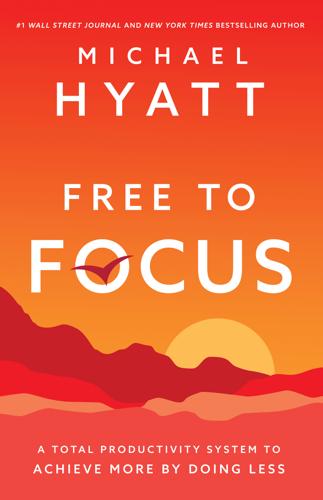
Free to Focus: A Total Productivity System to Achieve More by Doing Less
by
Michael Hyatt
Published 8 Apr 2019
“Ritual,” Dictionary.com, http://www.dictionary.com/browse/ritual. 2. Mason Currey, Daily Rituals (New York: Knopf, 2015), xiv. Also see Pang’s discussion of morning routines in Rest, 75–92. 3. Atul Gawande, “The Checklist,” New Yorker, December 10, 2007, https://www.newyorker.com/magazine/2007/12/10/the-checklist. See also Gawande’s book, The Checklist Manifesto (New York: Metropolitan Books, 2009). Chapter 6 Delegate 1. Ashley V. Whillans et al., “Buying Time Promotes Happiness,” PNAS, August 8, 2017, http://www.pnas.org/content/114/32/8523. 2. Adapted and expanded from Stephanie Winston, The Organized Executive (New York: Norton, 1983), 249–50.
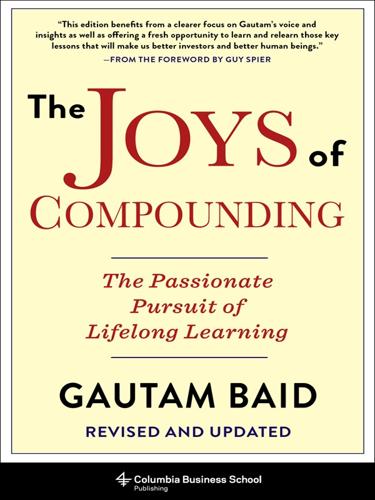
The Joys of Compounding: The Passionate Pursuit of Lifelong Learning, Revised and Updated
by
Gautam Baid
Published 1 Jun 2020
Sheeraz Raza, “Great Interview with Alice Schroeder via Simoleon Sense,” ValueWalk, November 6, 2010, https://www.valuewalk.com/2010/11/great-interview-alice-schroeder-simoleon-sense. 2. Goodreads.com, accessed December 9, 2019, https://www.goodreads.com/quotes/8956691-what-the-human-being-is-best-at-doing-is-interpreting. 3. Quoted in Atul Gawande, The Checklist Manifesto (Gurgaon, India: Penguin Random House, 2014). 4. Charlie Munger, “Wesco 2002 Annual Meeting,” Mungerisms, Pasadena, CA, 2002, http://mungerisms.blogspot.com/2009/08/wesco-2002-annual-meeting.html. 5. Peter Bevelin, Seeking Wisdom: From Darwin to Munger, 3rd ed. (Malmö, Sweden: PCA Publications, 2007). 15.
…
Galton, Francis. “Vox Populi.” Nature, March 7, 1907. http://galton.org/essays/1900-1911/galton-1907-vox-populi.pdf. Gates, Bill. “This Animal Kills More People in a Day Than Sharks Do in a Century.” GatesNotes, April 23, 2018. https://www.gatesnotes.com/Health/Mosquito-Week-2018. Gawande, Atul. The Checklist Manifesto. Gurgaon, India: Penguin Random House, 2014. Gayner, Tom. “Identifying Great Capital Allocators.” Presentation at the 11th Annual Value Investor Conference, May 1 and 2, 2014. http://www.valueinvestorconference.com/2014presentations/VIC%2014%20Gayner%20Transcript.pdf. Gladwell, Malcolm. Blink: The Power of Thinking Without Thinking.

Reinventing Capitalism in the Age of Big Data
by
Viktor Mayer-Schönberger
and
Thomas Ramge
Published 27 Feb 2018
Rosenfield, Linnea Gandhi, and Tom Blaser, “Noise: How to Overcome the High, Hidden Cost of Inconsistent Decision Making,” Harvard Business Review (October 2016), https://hbr.org/2016/10/noise. Checklists in aircraft: Brigette M. Hales and Peter J. Pronovost, “The Checklist—a Tool for Error Management and Performance,” Journal of Critical Care 21 (2006), 231–235. checklist in a hospital intensive care unit: Atul Gawande, The Checklist Manifesto: How to Get Things Right (New York: Metropolitan Books, 2009). Gawande was inspired to test the checklist approach after reading about a pilot study conducted by Peter Pronovost of the Johns Hopkins University School of Medicine. balancing centralized and delegated decision: Yingyi Qian, Gérard Roland, and Chenggang Xu, “Coordinating Changes in M-Form and U-Form Organizations,” paper presented to the Nobel Symposium, April 1998, https://papers.ssrn.com/sol3/papers.cfm?
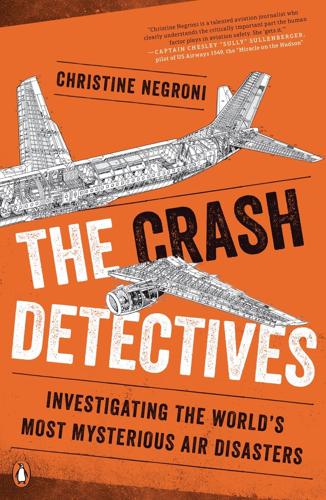
The Crash Detectives: Investigating the World's Most Mysterious Air Disasters
by
Christine Negroni
Published 26 Sep 2016
QF32. Sydney: Pan Macmillian Australia, 2012. deHaven-Smith , L. Conspiracy Theory in America. Austin: University of Texas Press, 2014. Filotas, L. Improbable Cause: Deceit and Dissent in the Investigation of America’s Worst Military Air Disaster. BookSurge, 2007. Gawande, A. The Checklist Manifesto: How to Get Things Right. New York: Metropolitian Books, 2009. Gero, D. Aviation Disasters: The World’s Major Civil Airliner Crashes Since 1950, 4th ed. Stroud, England: Patrick Stephens, 2006. Gonzales, L. Flight 232: A Story of Disaster and Survival. New York: W. W. Norton, 2014. Griffioen, H.
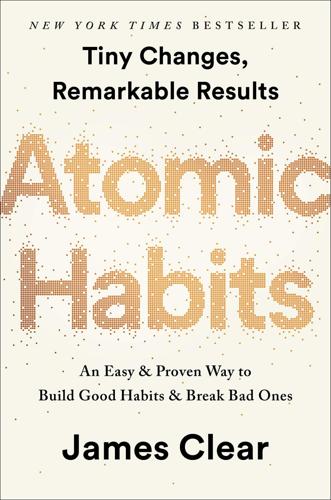
Atomic Habits: An Easy & Proven Way to Build Good Habits & Break Bad Ones
by
James Clear
Published 15 Oct 2018
CHAPTER 15 over nine million people called it home: “Population Size and Growth of Major Cities, 1998 Census,” Population Census Organization, http://www.pbs.gov.pk/sites/default/files//tables/POPULATION%20SIZE%20AND%20GROWTH%20OF%20MAJOR%20CITIES.pdf. Over 60 percent of Karachi’s residents: Sabiah Askari, Studies on Karachi: Papers Presented at the Karachi Conference 2013 (Newcastle upon Tyne, UK: Cambridge Scholars, 2015). It was this public health crisis that had brought Stephen Luby to Pakistan: Atul Gawande, The Checklist Manifesto: How to Get Things Right (Gurgaon, India: Penguin Random House, 2014). “In Pakistan, Safeguard was a premium soap”: All quotes in this section are from an email conversation with Stephen Luby on May 28, 2018. The rate of diarrhea fell by 52 percent: Stephen P. Luby et al., “Effect of Handwashing on Child Health: A Randomised Controlled Trial,” Lancet 366, no. 9481 (2005), doi:10.1016/s0140–6736(05)66912–7.
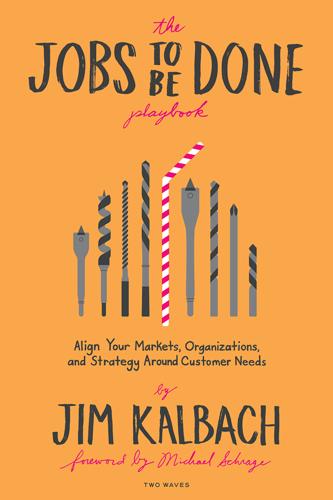
The Jobs to Be Done Playbook: Align Your Markets, Organization, and Strategy Around Customer Needs
by
Jim Kalbach
Published 6 Apr 2020
In my classes, workshops, and advisory work, I have the good fortune to work with talented people who truly want to do excellent work. I like and admire them. They are talented and smart. But oftentimes, because they are so talented and smart, they presume or assume they know the fundamentals of something when, in truth, they do not. With apologies to Atul Gawande, they have a “Checklist Manifesto” grasp of what they’re trying to do. That is, they’re doing everything they’re supposed to do but lack an essence and esprit that makes the work compelling. What people minimize (or overlook) about Gawande’s checklists is that they are supposed to be prompts and reminders for people who truly know their stuff.
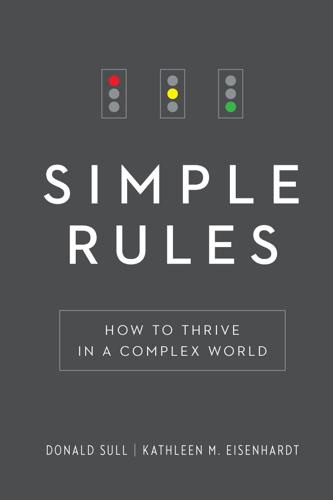
Simple Rules: How to Thrive in a Complex World
by
Donald Sull
and
Kathleen M. Eisenhardt
Published 20 Apr 2015
. [>] A decade after the order’s: Ibid., 82. [>] Both flexibility and consistency: Jason P. Davis, Kathleen M. Eisenhardt, and Christopher B. Bingham, “Optimal Structure, Market Dynamism, and the Strategy of Simple Rules,” Administrative Science Quarterly 54, no. 3 (2009): 413–52. [>] Although these errors: Atul Gawande, The Checklist Manifesto: How to Get Things Right (New York: Metropolitan, 2009). [>] The chain’s selling point: McDonald’s has ranked last for seventeen of the last eighteen years in the American Customer Satisfaction Index. American Customer Satisfaction Index, “Benchmarks by Industry: Limited-Service Restaurants,” http://www.theacsi.org/index.php?
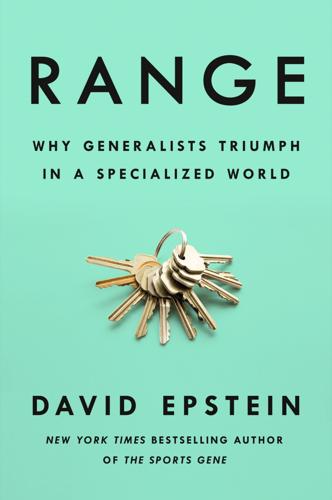
Range: Why Generalists Triumph in a Specialized World
by
David Epstein
Published 1 Mar 2019
“being invincible”; “His story is completely different”: Stauffer, The Roger Federer Story. study of thirty violinists: K. A. Ericsson, R. T. Krampe, and C. Tesch-Römer, “The Role of Deliberate Practice in the Acquisition of Expert Performance,” Psychological Review 100, no. 3 (1993): 363–406. “we have to check”: A. Gawande, The Checklist Manifesto (New York: Metropolitan Books, 2010). “slow bakers”: For an excellent look at how Great Britain altered its talent pipelines, see: O. Slot, The Talent Lab (London: Ebury Press, 2017). ramp up technical practice in one area: Examples of studies—including those cited in the introduction—from a range of sports and countries documenting the trend of sampling and delayed specialization include (the first paper here is the source for data in the charts showing practice hours): K.
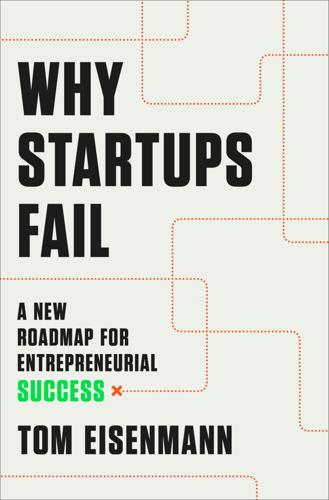
Why Startups Fail: A New Roadmap for Entrepreneurial Success
by
Tom Eisenmann
Published 29 Mar 2021
Eliot Cohen and John Gooch, Military Misfortunes: The Anatomy of Failure in War (New York: Free Press, 1990, examines failure in battle. Richard Neustadt and Ernest May, Thinking in Time: The Uses of History for Decision Makers (New York: Free Press, 1989), contrasts foreign and domestic policy successes and failures. Atul Gawande, The Checklist Manifesto: How to Get Things Right (New York: Metropolitan Books, 2009), explores medical failures and how to avoid them. “If you cannot fail”: Eric Ries, The Lean Startup: How Today’s Entrepreneurs Use Radical Innovation to Create Successful Businesses (New York: Currency, 2011), p. 56. The role of falsifiability in theory development and testing is discussed in Karl Popper, The Logic of Scientific Discovery (London: Hutchison, 1959).
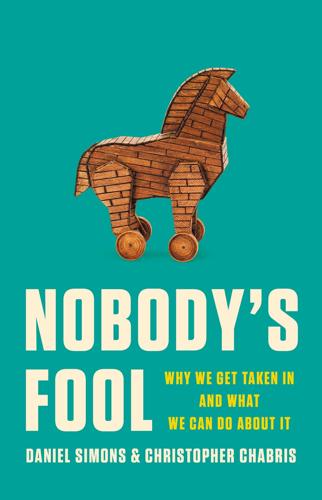
Nobody's Fool: Why We Get Taken in and What We Can Do About It
by
Daniel Simons
and
Christopher Chabris
Published 10 Jul 2023
Although some people claimed to have been abducted prior to 1962, they did not make those claims until after 1962. 39. S. Zito, “Who Is Kathy Barnette?,” Washington Examiner, May 11, 2022 [https://www.washingtonexaminer.com/opinion/who-is-kathy-barnette]. 40. For more examples, see A. Gawande, The Checklist Manifesto: How to Get Things Right (New York: Metropolitan Books, 2009). 41. Also see W. Berger, The Book of Beautiful Questions (New York: Bloomsbury, 2018). 42. This question was suggested on Twitter by the psychologist Geoffrey Miller. 43. D. A. Redelmeier, E. Shafir, and P. S. Aujla, “The Beguiling Pursuit of More Information,” Medical Decision Making 21 (2001): 376–381 [https://doi.org/10.1177/0272989X0102100504].
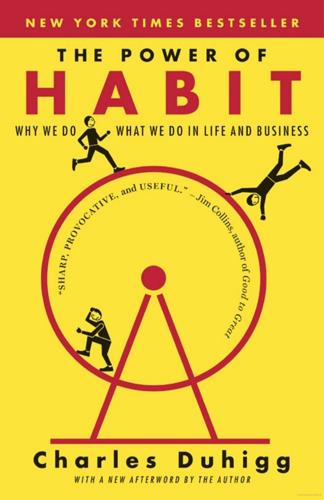
The Power of Habit: Why We Do What We Do in Life and Business
by
Charles Duhigg
Published 1 Jan 2011
., “Incidence, Patterns, and Prevention of Wrong-Site Surgery,” Archives of Surgery 141, no. 4 (April 2006): 353–57. 6.39 Other hospitals have made similar For a discussion on this topic, see McCarthy and Blumenthal, “Stories from the Sharp End”; Atul Gawande, Better: A Surgeon’s Notes on Performance (New York: Metropolitan Books, 2008); Atul Gawande, The Checklist Manifesto: How to Get Things Right (New York: Metropolitan Books, 2009). 6.40 In the wake of that tragedy NASA, “Report to the President: Actions to Implement the Recommendations of the Presidential Commission on the Space Shuttle Challenger Accident,” July 14, 1986; Matthew W. Seeger, “The Challenger Tragedy and Search for Legitimacy,” Communication Studies 37, no. 3 (1986): 147–57; John Noble Wilford, “New NASA System Aims to Encourage Blowing the Whistle,” The New York Times, June 5, 1987; Joseph Lorenzo Hall, “Columbia and Challenger: Organizational Failure at NASA,” Space Policy 19, no. 4 (November 2003), 239–47; Barbara Romzek and Melvin Dubnick, “Accountability in the Public Sector: Lessons from the Challenger Tragedy,” Public Administration Review 47, no. 3 (May–June 1987): 227–38. 6.41 Then, a runway error Karl E.
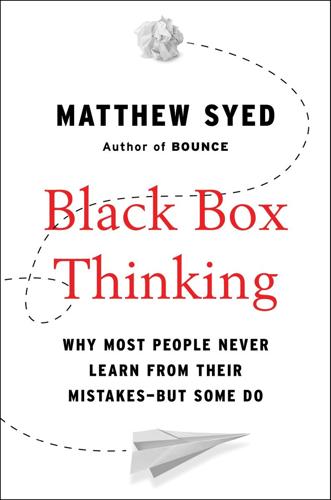
Black Box Thinking: Why Most People Never Learn From Their Mistakes--But Some Do
by
Matthew Syed
Published 3 Nov 2015
Select Committee Report: http://www.publications.parliament.uk/pa/cm201415/cmselect/cmpubadm/886/88602.htm. 27. http://www.deadbymistake.com/. 28. Michael Gillam et al., “The Health Care Singularity and the Age of Semantic Medicine” in The Fourth Paradigm: Data-Intensive Scientific Discovery (Microsoft, 2009). 29. Atul Gawande, The Checklist Manifesto: How to Get Things Right (London: Profile, 2010). 30. Atul Gawande, Complications. 31. http://www.nytimes.com/2009/05/26/health/26autopsy.html?pagewanted=all&_r=0. 32. Atul Gawande, Complications. 33. http://www.pbs.org/wgbh/pages/frontline/criminal-justice/post-mortem/more-deaths-go-unchecked-as-autopsy-rate-falls-to-miserably-low-levels/. 34.

Work Rules!: Insights From Inside Google That Will Transform How You Live and Lead
by
Laszlo Bock
Published 31 Mar 2015
An engineering manager who can’t code is not going to be able to lead a team at Google. But of the behaviors that differentiated the very best, technical input made the smallest difference to teams. In addition to being specific, we had to make good management automatic. Atul Gawande has written persuasively in The New Yorker and in his book The Checklist Manifesto about the power of checklists. I first encountered his writing in the 2009 article “The Checklist,”139 where he described the test flight of the Model 299, a next-generation long-range bomber developed by the Boeing Corporation in 1935. It could “carry five times as many bombs as the Army had requested… fly faster than previous bombers, and almost twice as far.”
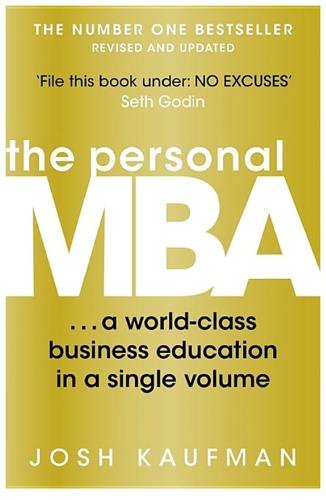
The Personal MBA: A World-Class Business Education in a Single Volume
by
Josh Kaufman
Published 2 Feb 2011
As a result, plane crashes are extremely rare—statistically, it’s safer to fly commercially than to drive. Even simple processes can benefit from Systemization and the use of Checklists. In 2001, a study on the effects of Checklisting was conducted by Dr. Peter Pronovost, which was described in detail in Atul Gawande’s The Checklist Manifesto and in an article Gawande published in the New Yorker. 2 The study was conducted in a hospital in Detroit that had the highest rate of ten-day IV line infections (a costly and life-threatening condition) in the country. Pronovost’s objective was to determine whether or not using Checklists would reduce the rate of infections.

Model Thinker: What You Need to Know to Make Data Work for You
by
Scott E. Page
Published 27 Nov 2018
“A Dual-Self Model of Impulse Control.” American Economic Review 96: 1449–1476. Gammill, James F., Jr., and Terry A. Marsh. 1988. “Trading Activity and Price Behavior in the Stock and Stock Index Futures Markets in October 1987.” Journal of Economic Perspectives 2, no. 3: 25–44. Gawande, Atul. 2009. The Checklist Manifesto: How to Get Things Right. New York: Henry Holt. Geithner, Timothy. 2014. Stress Test: Reflections on Financial Crises. New York: Crown. Gerschenkron, Alexander. 1952. “Economic Backwardness in Historical Perspective.” In The Progress of Underdeveloped Areas, ed. B. F. Hoselitz. Chicago: University of Chicago Press.
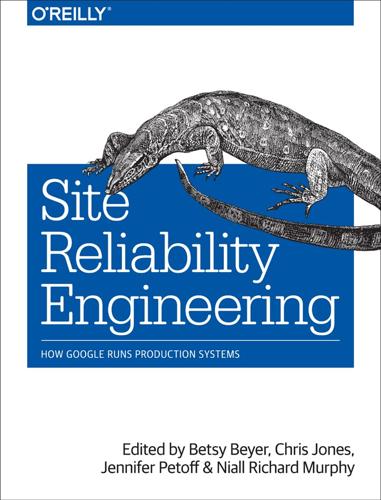
Site Reliability Engineering: How Google Runs Production Systems
by
Betsy Beyer
,
Chris Jones
,
Jennifer Petoff
and
Niall Richard Murphy
Published 15 Apr 2016
Fowler, “GUI Architectures”, blog post, 2006. [Gal78] J. Gall, SYSTEMANTICS: How Systems Really Work and How They Fail, 1st ed., Pocket, 1977. [Gal03] J. Gall, The Systems Bible: The Beginner’s Guide to Systems Large and Small, 3rd ed., General Systemantics Press/Liberty, 2003. [Gaw09] A. Gawande, The Checklist Manifesto: How to Get Things Right: Henry Holt and Company, 2009. [Ghe03] S. Ghemawat, H. Gobioff, and S-T. Leung, “The Google File System”, in 19th ACM Symposium on Operating Systems Principles, October 2003. [Gil02] S. Gilbert and N. Lynch, “Brewer’s Conjecture and the Feasibility of Consistent, Available, Partition-Tolerant Web Services”, in ACM SIGACT News, vol. 33, no. 2, 2002.